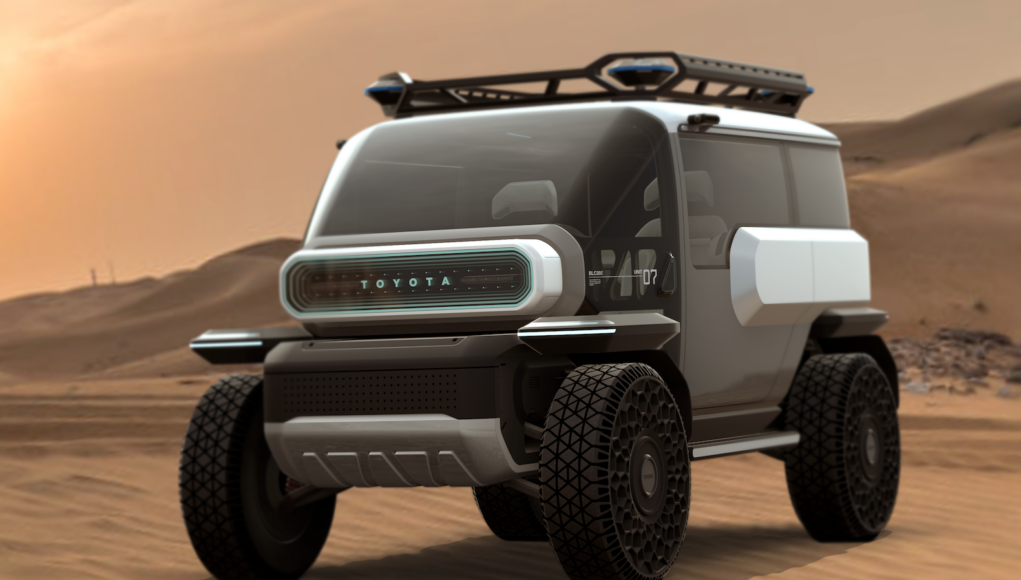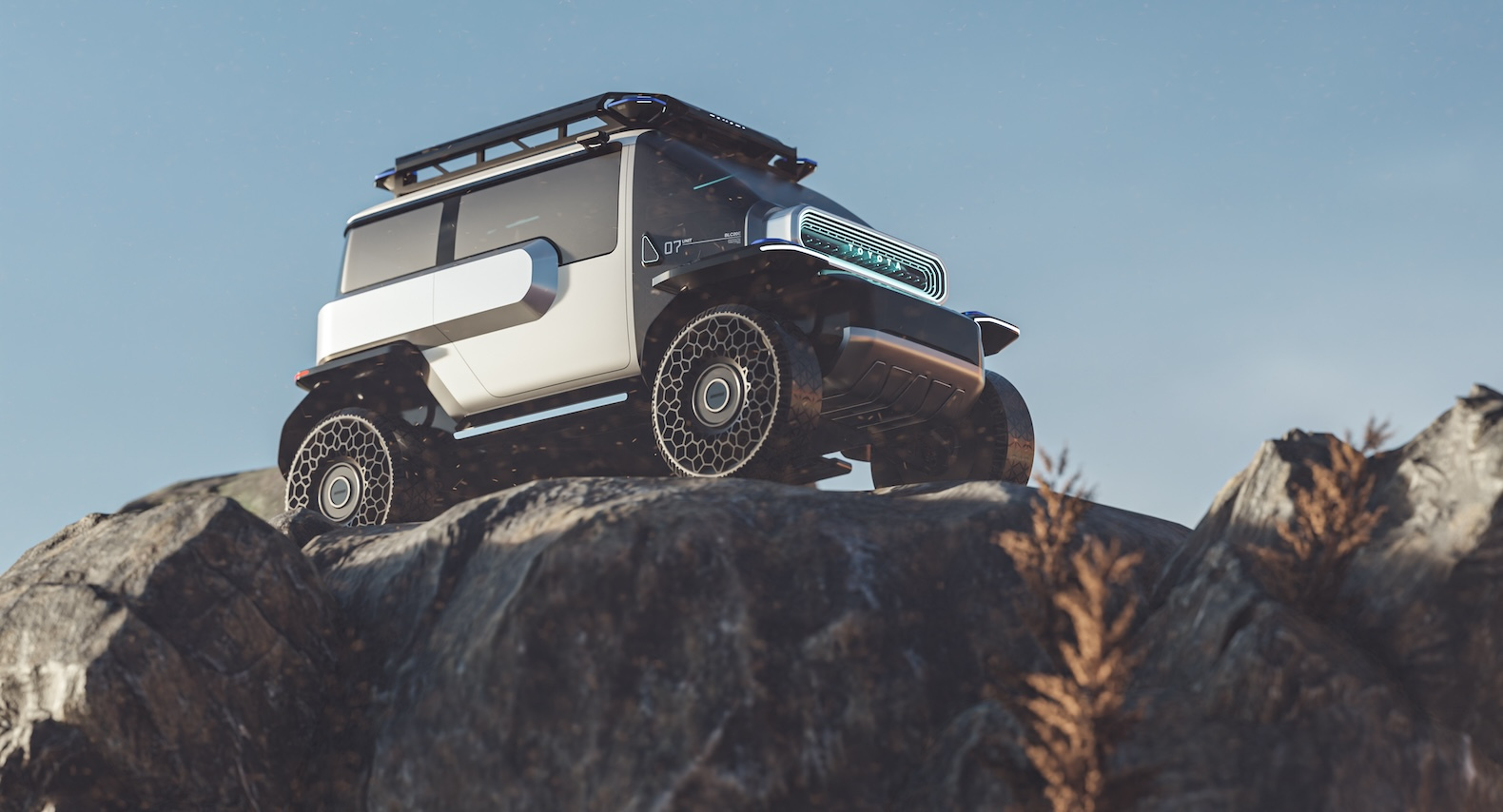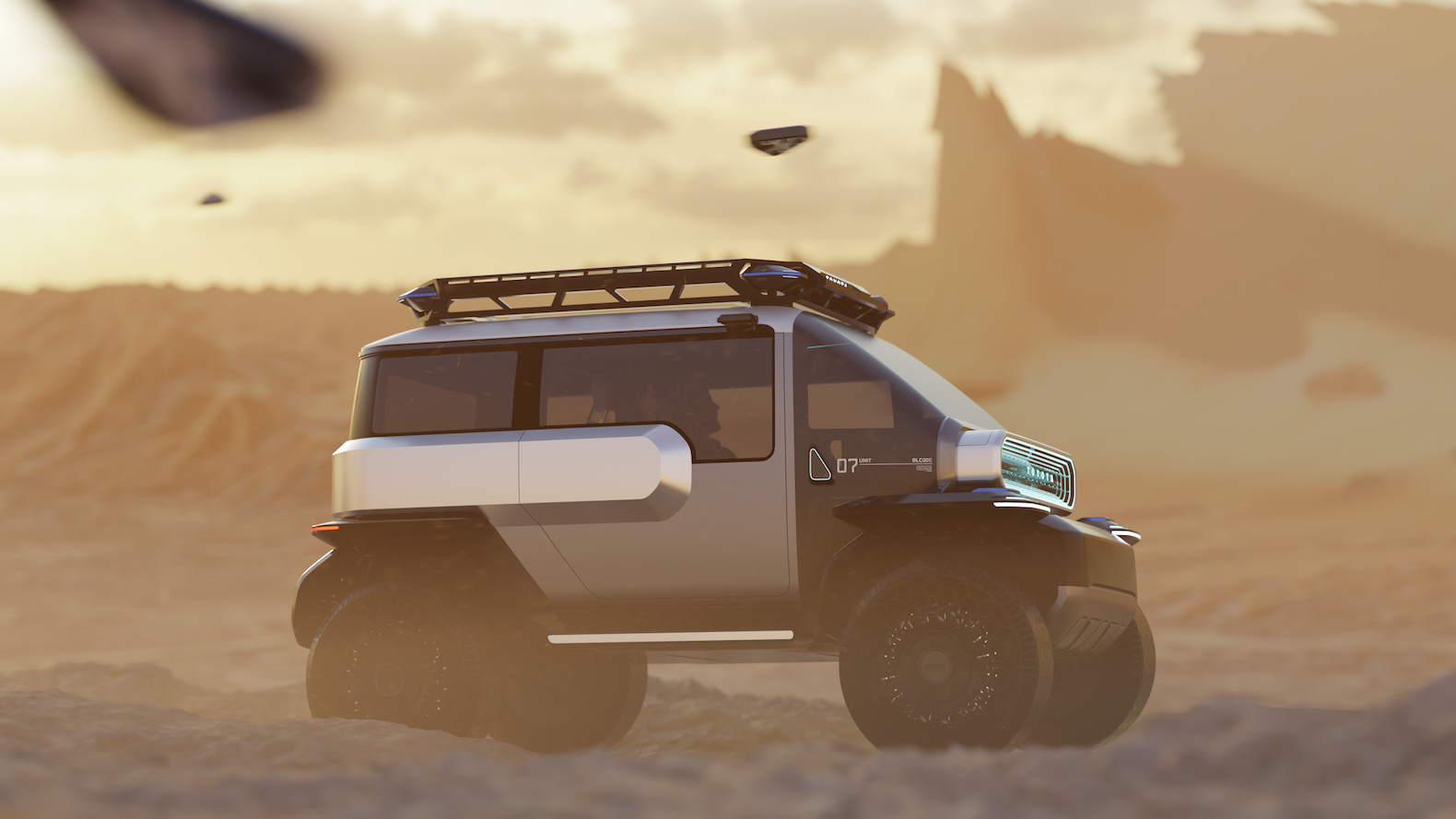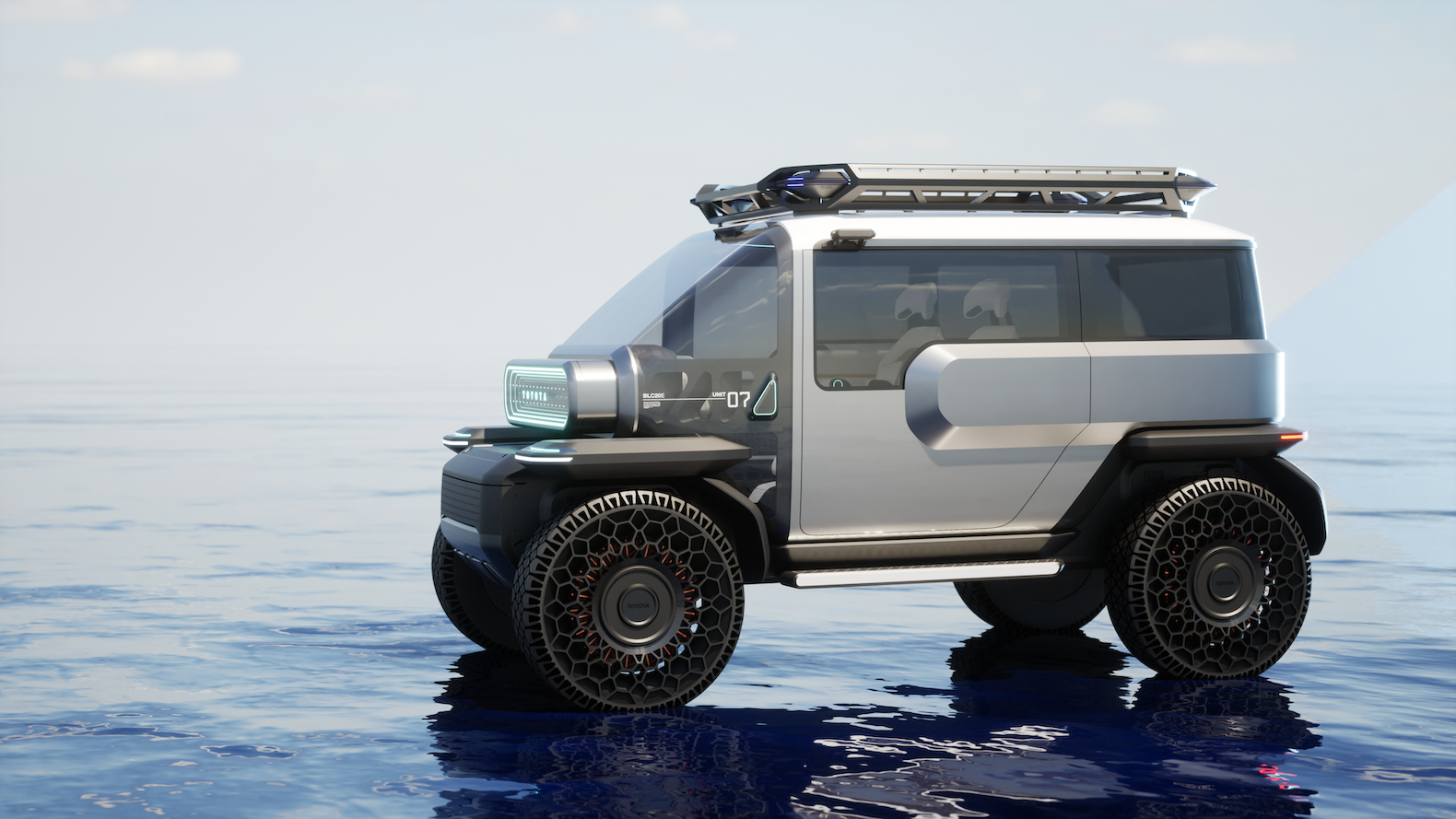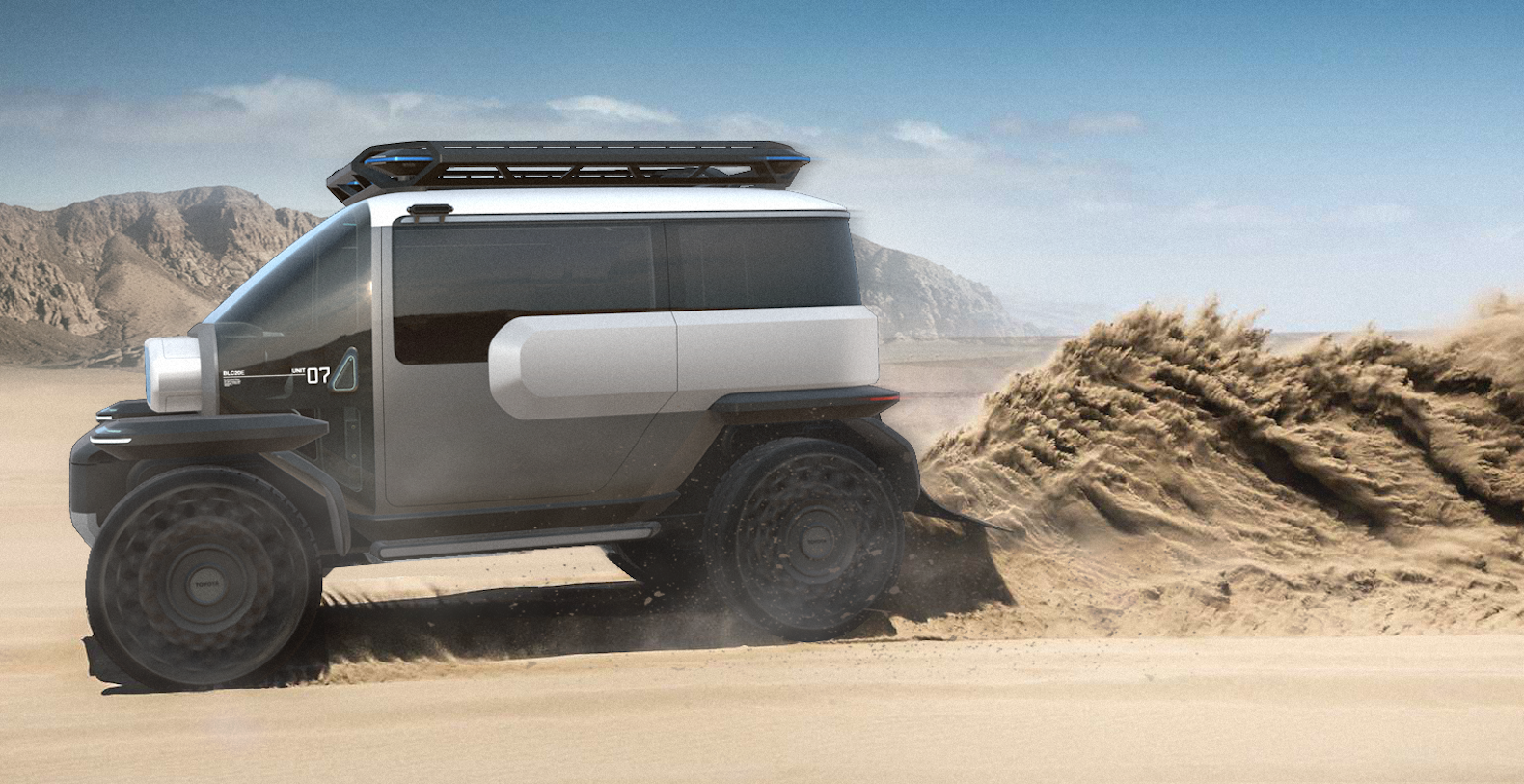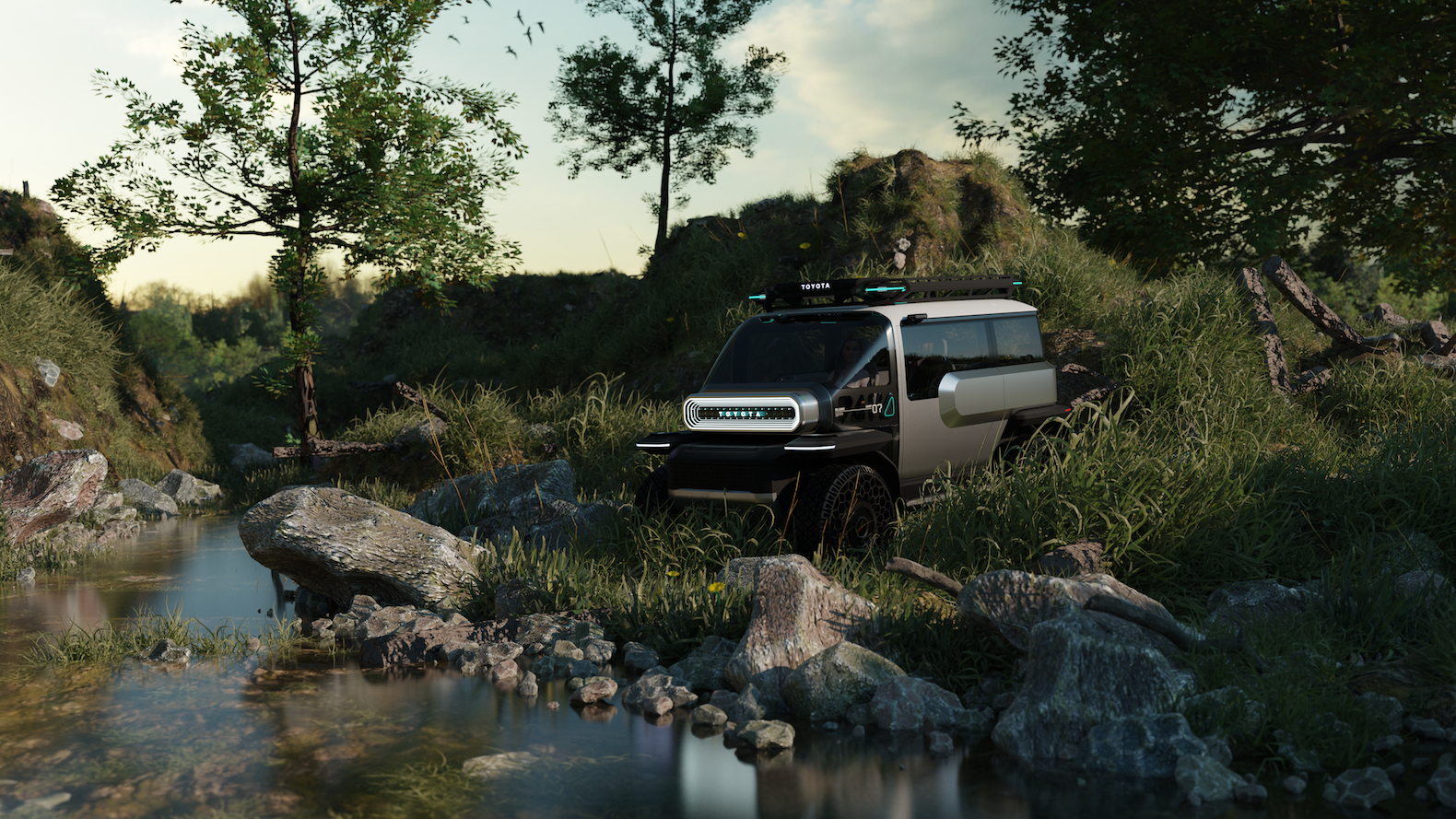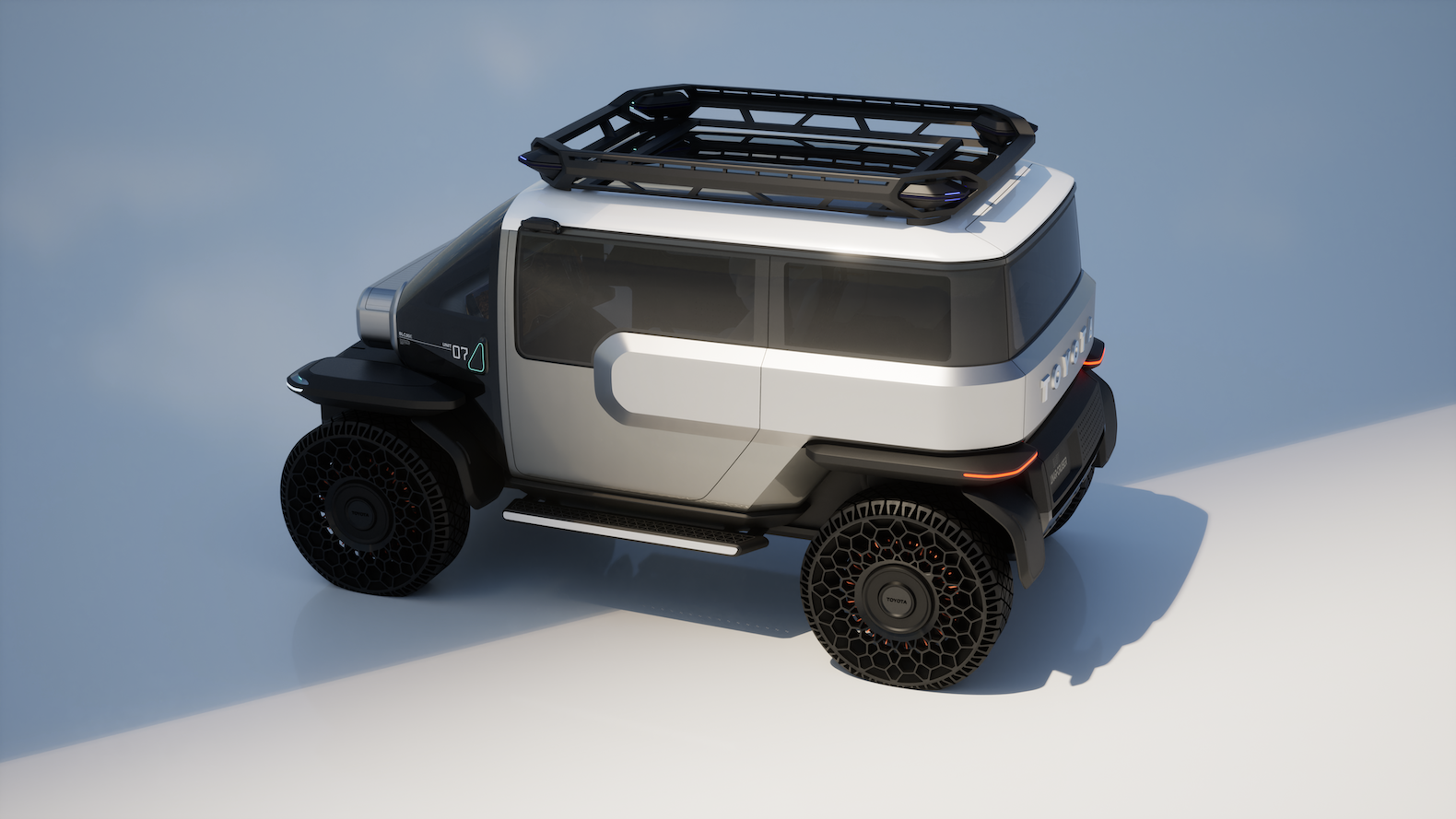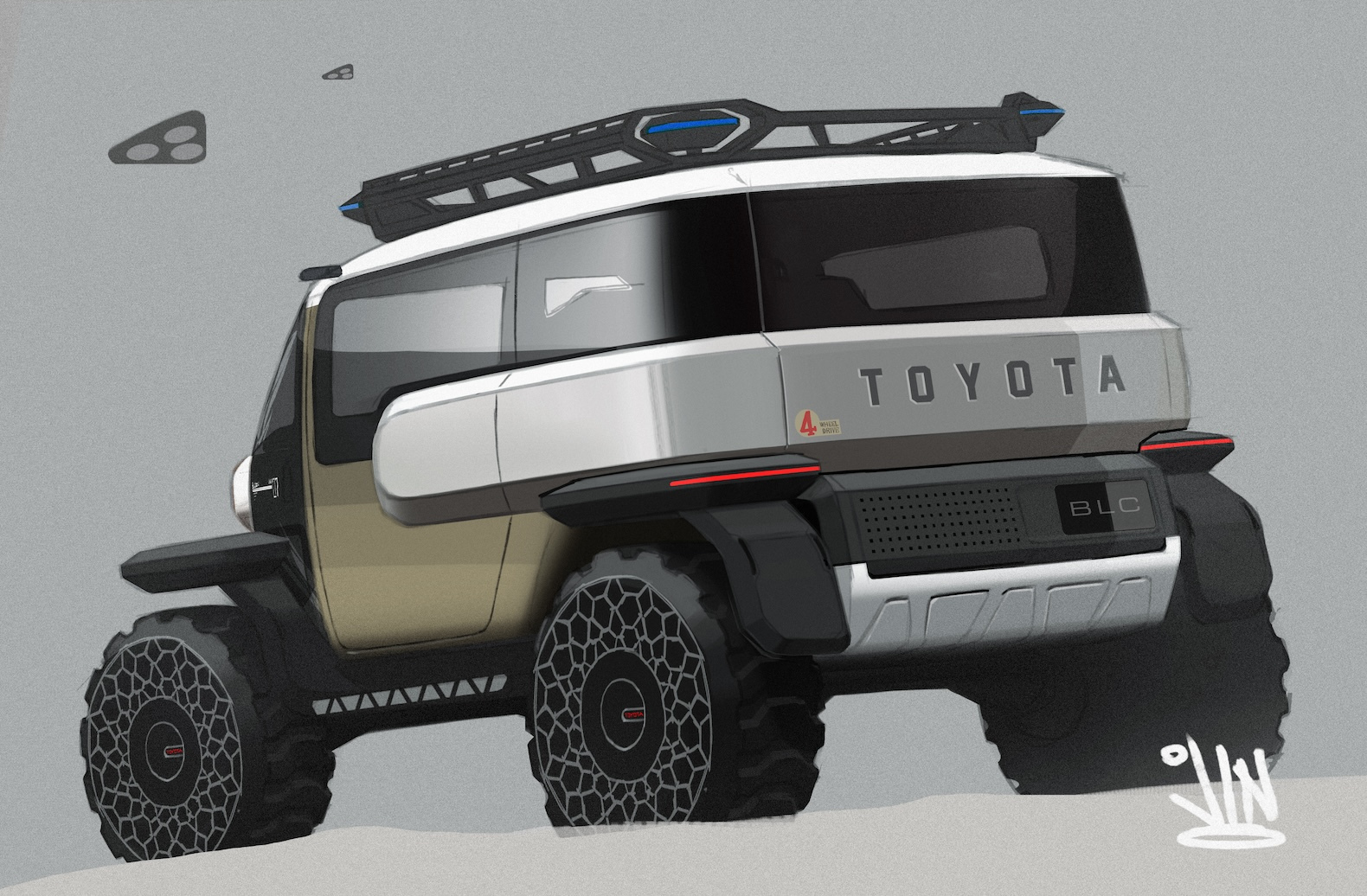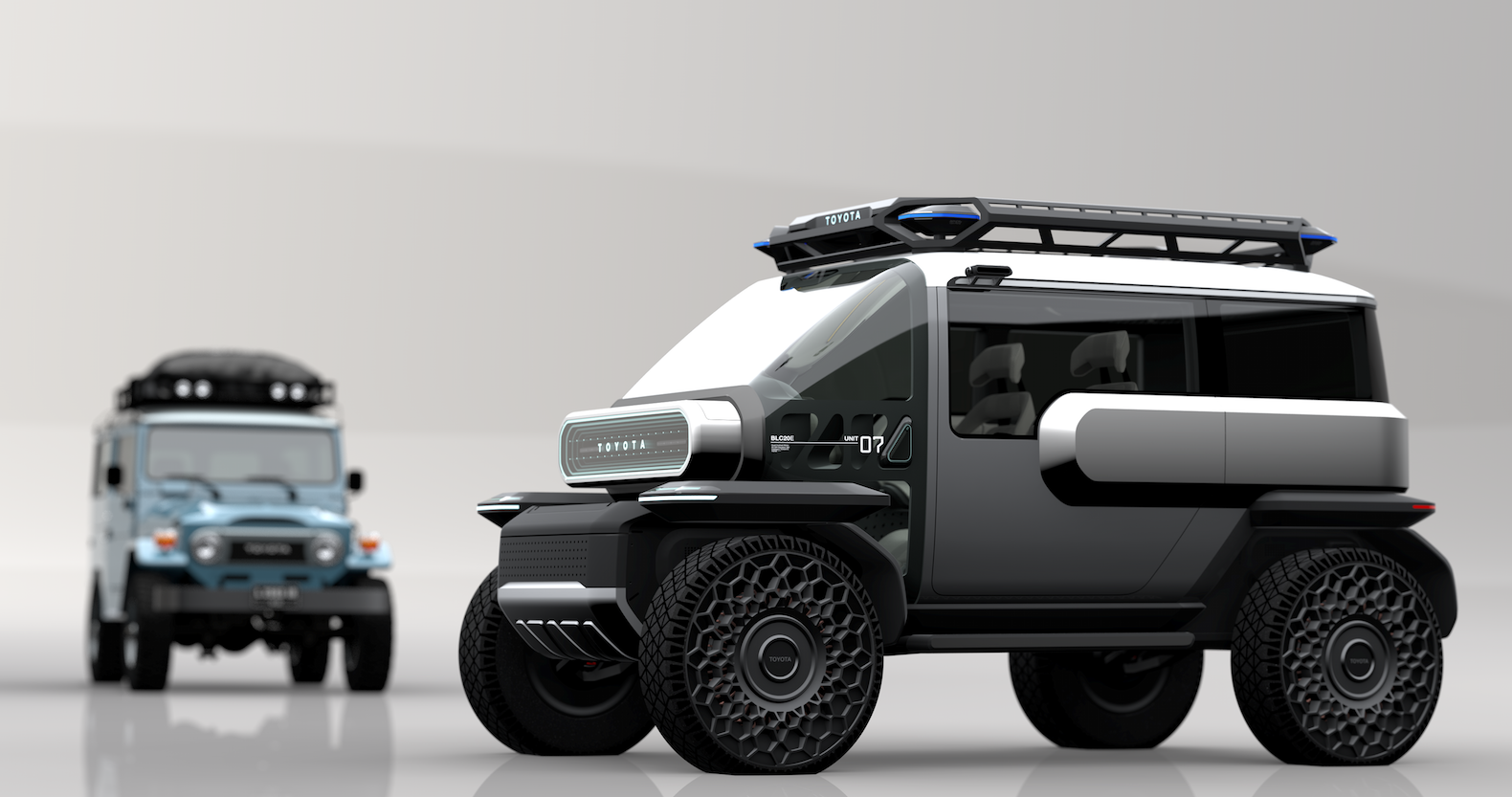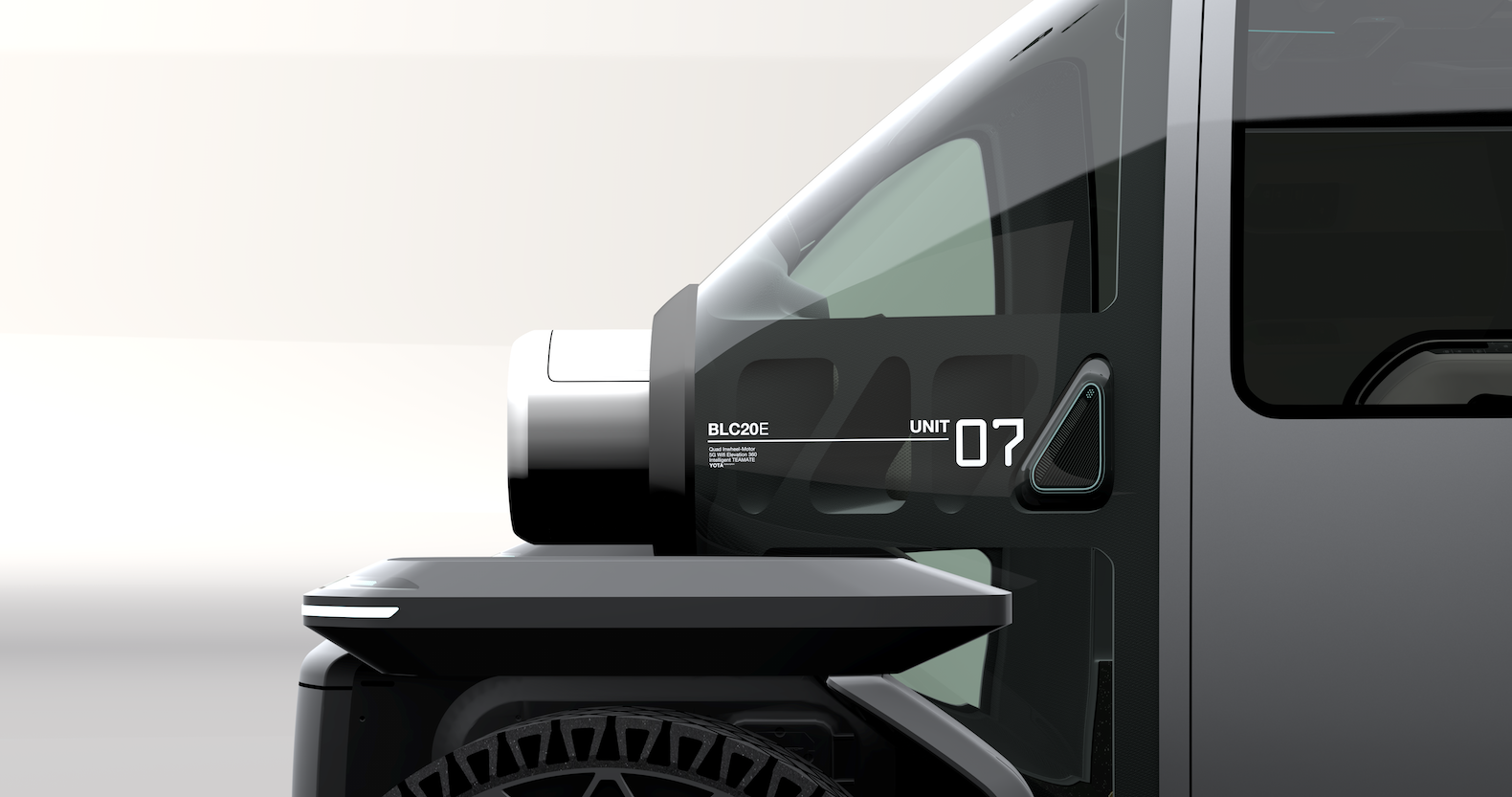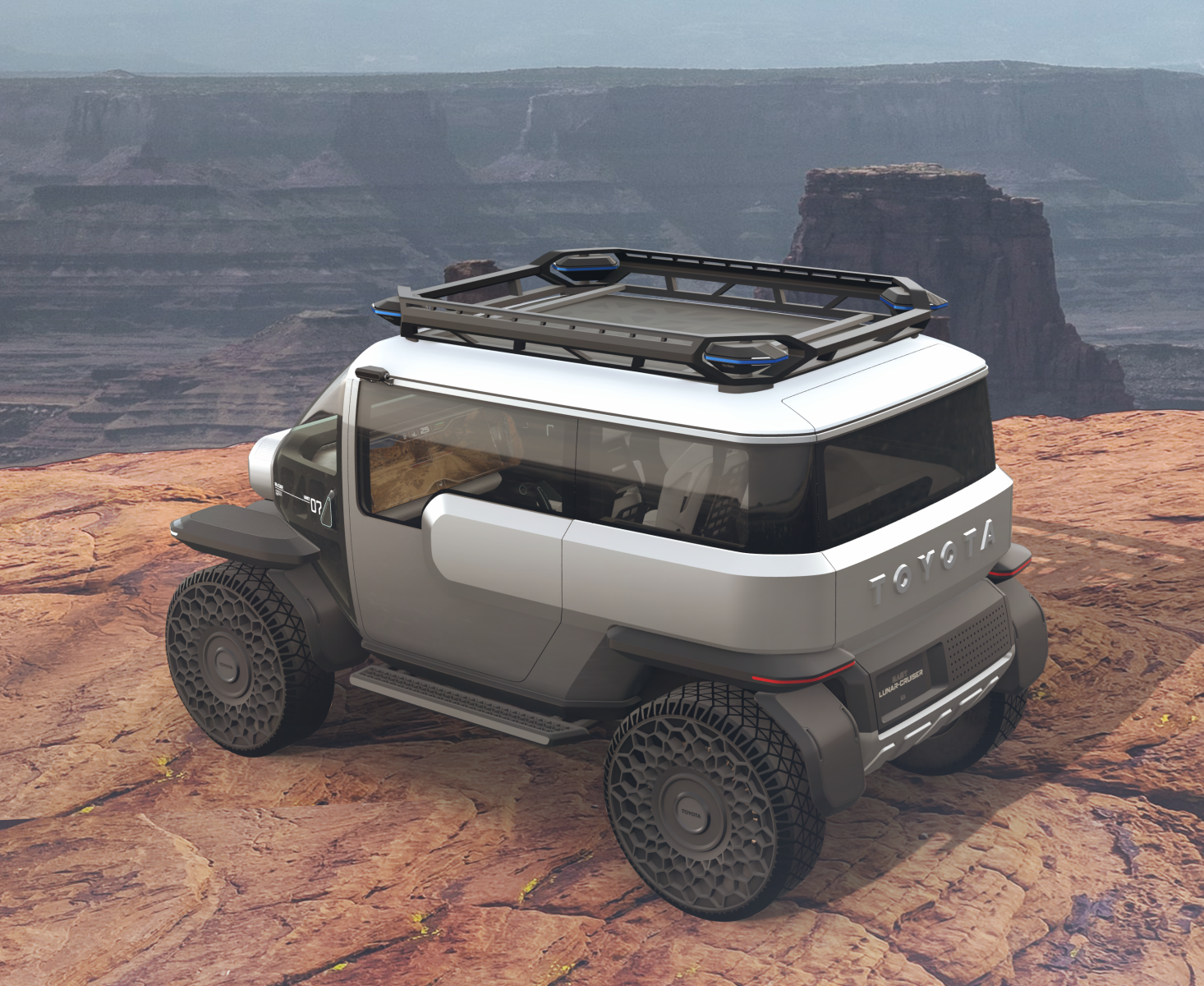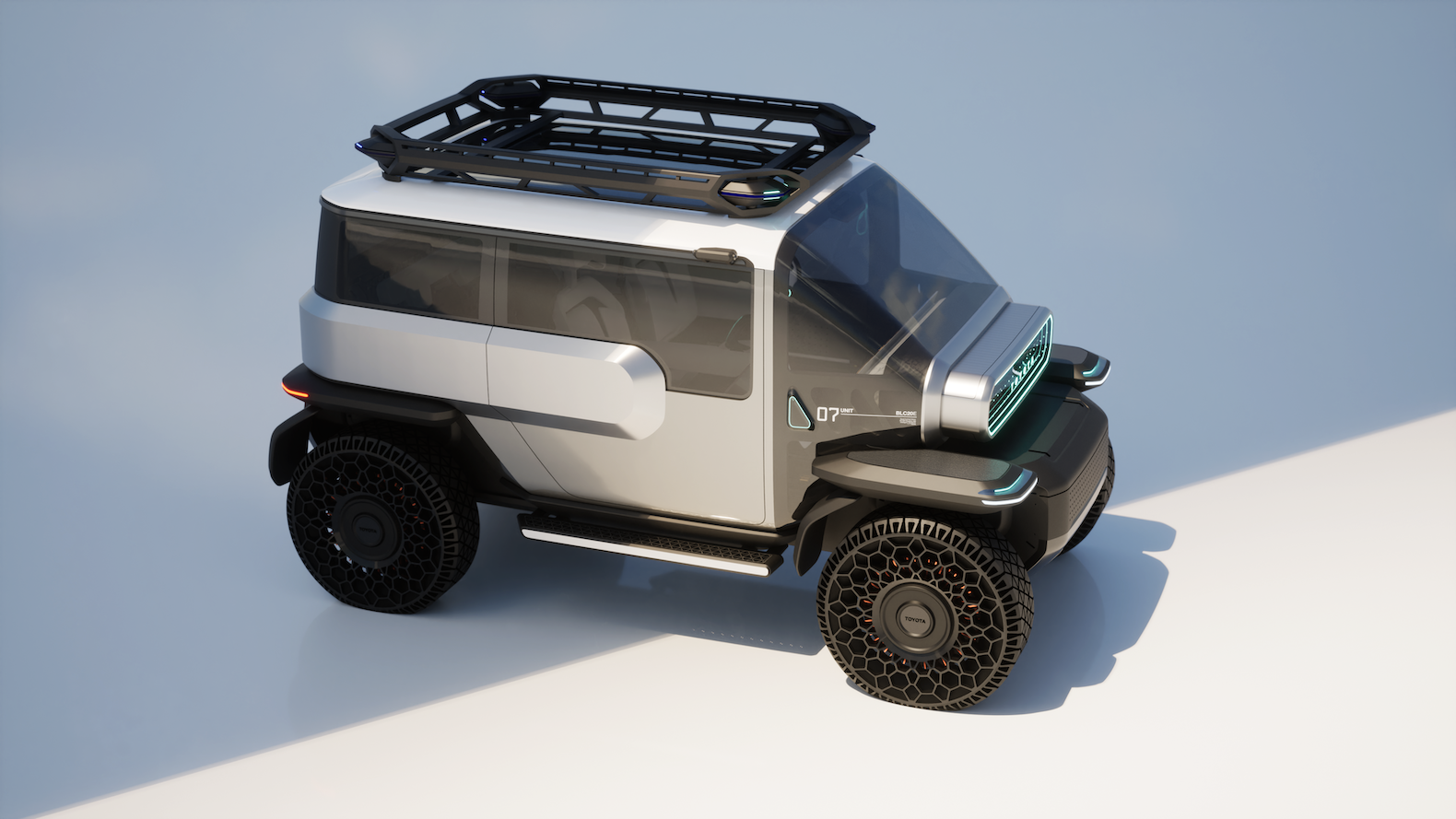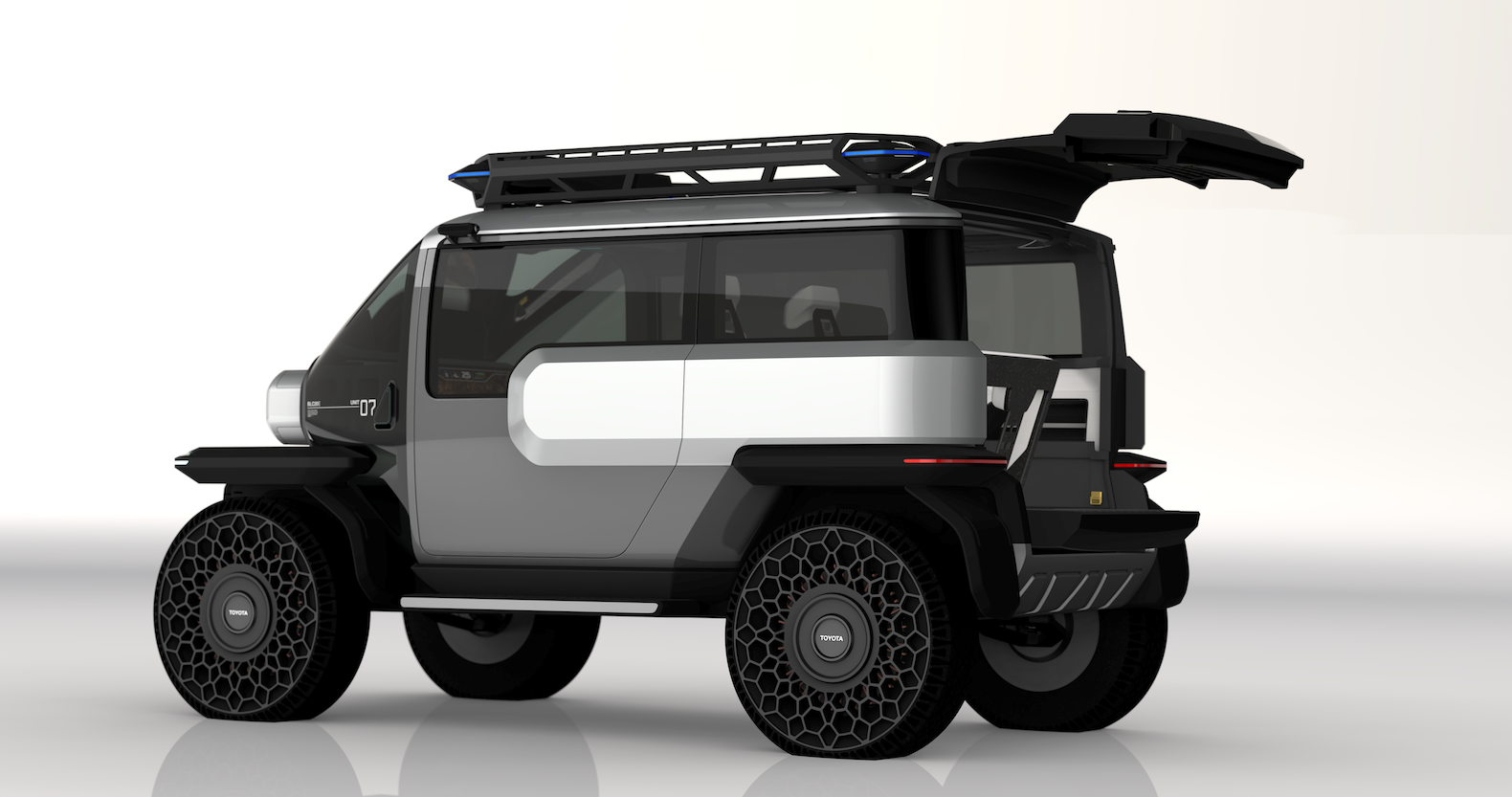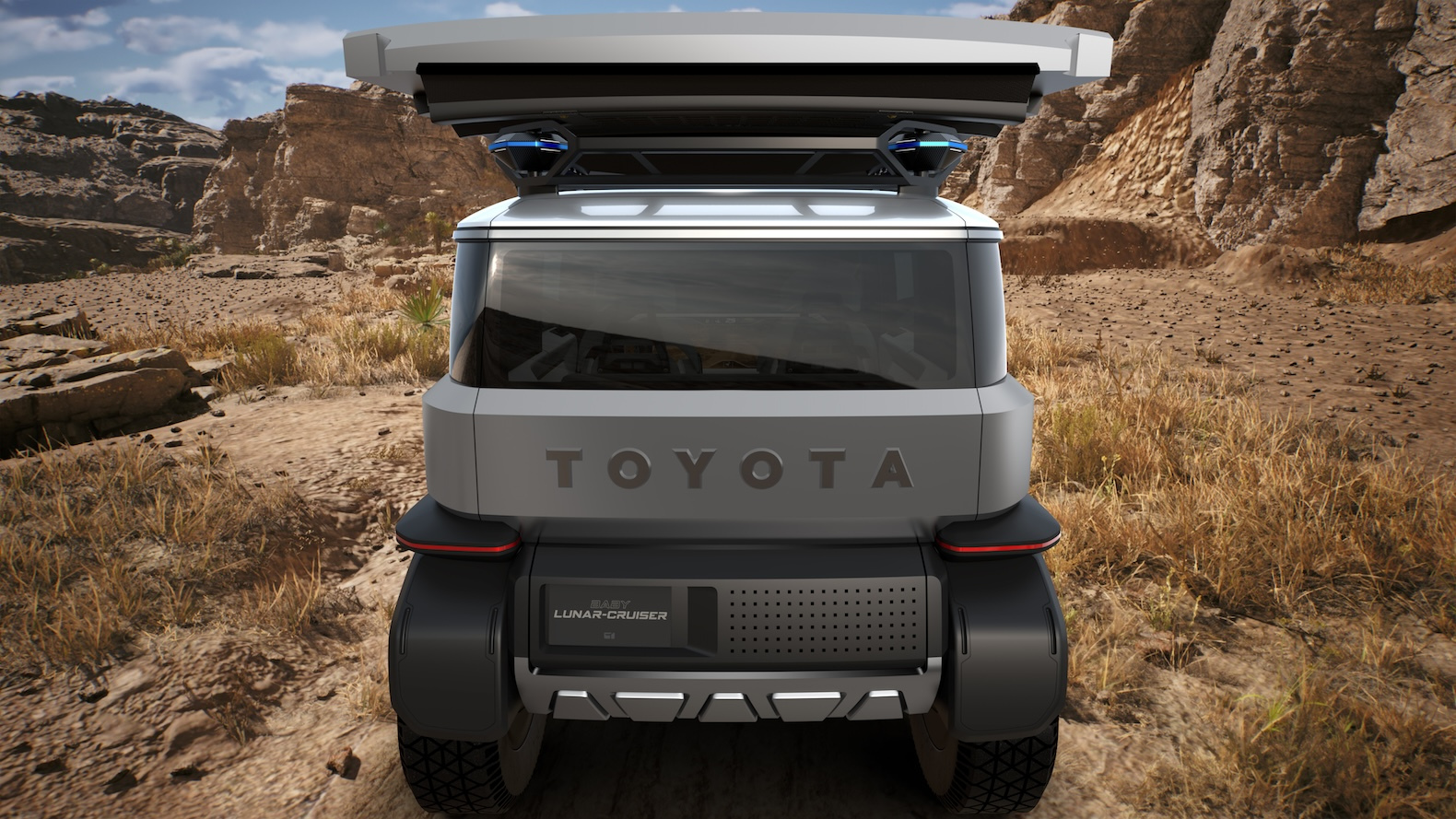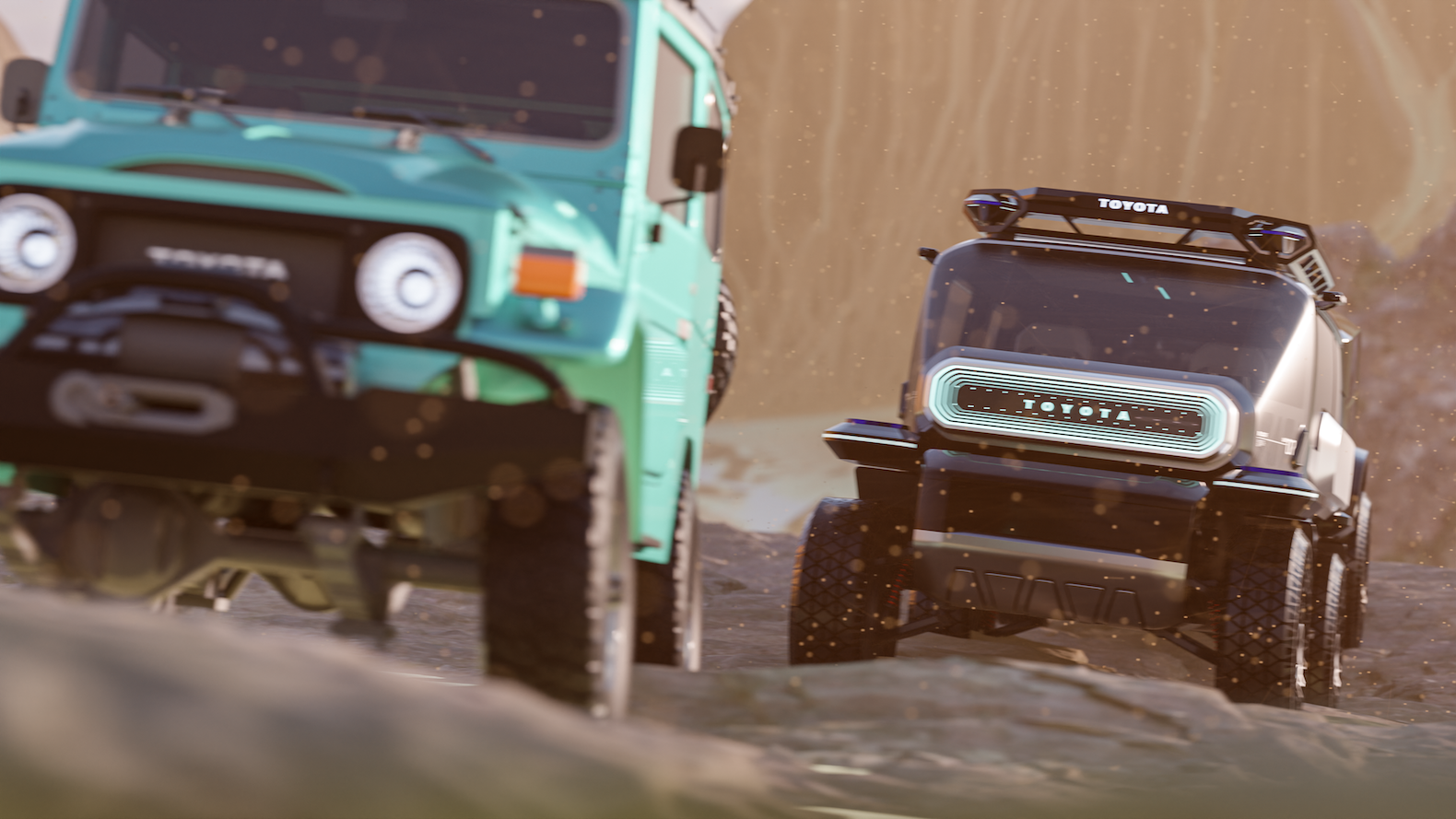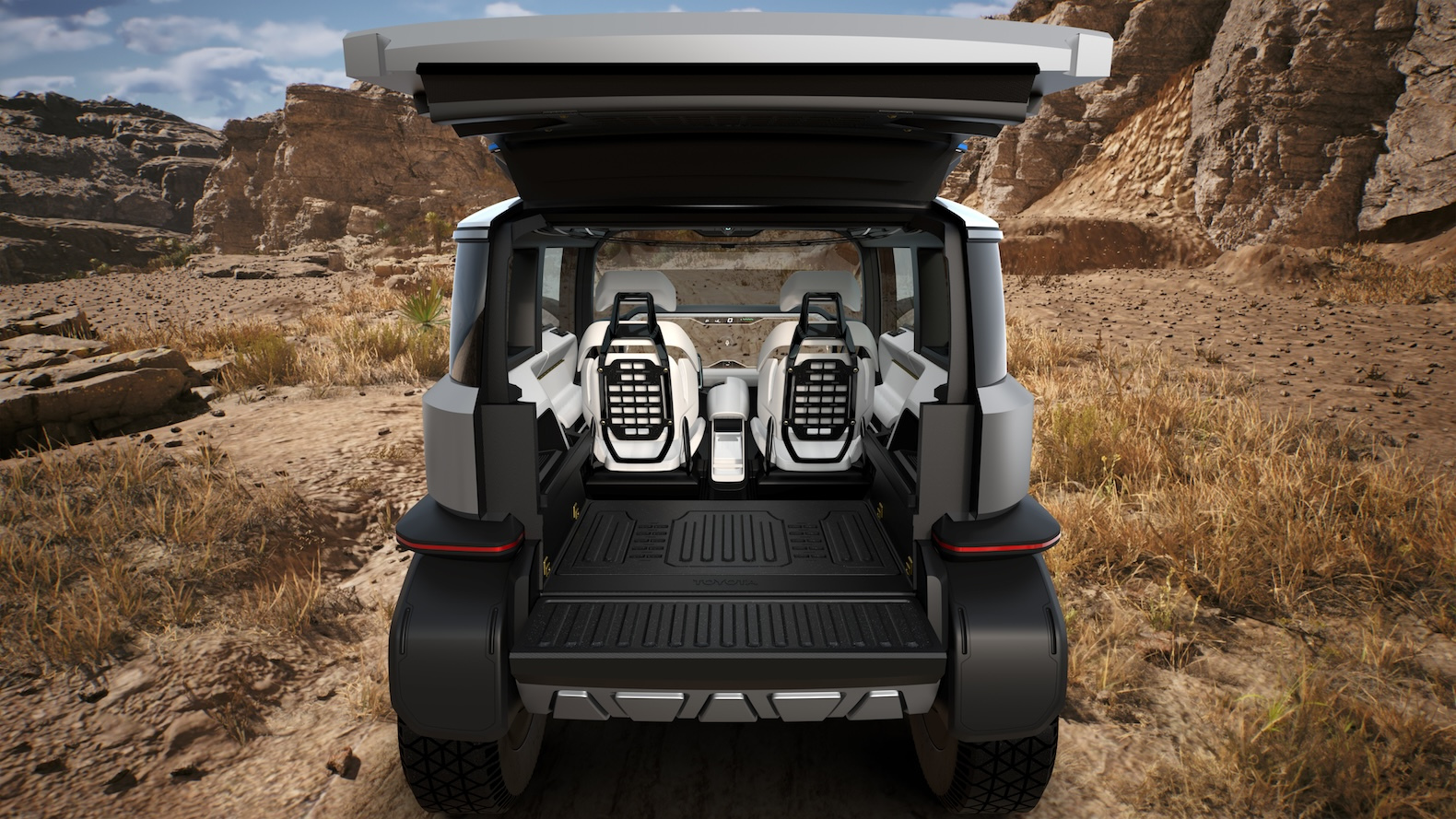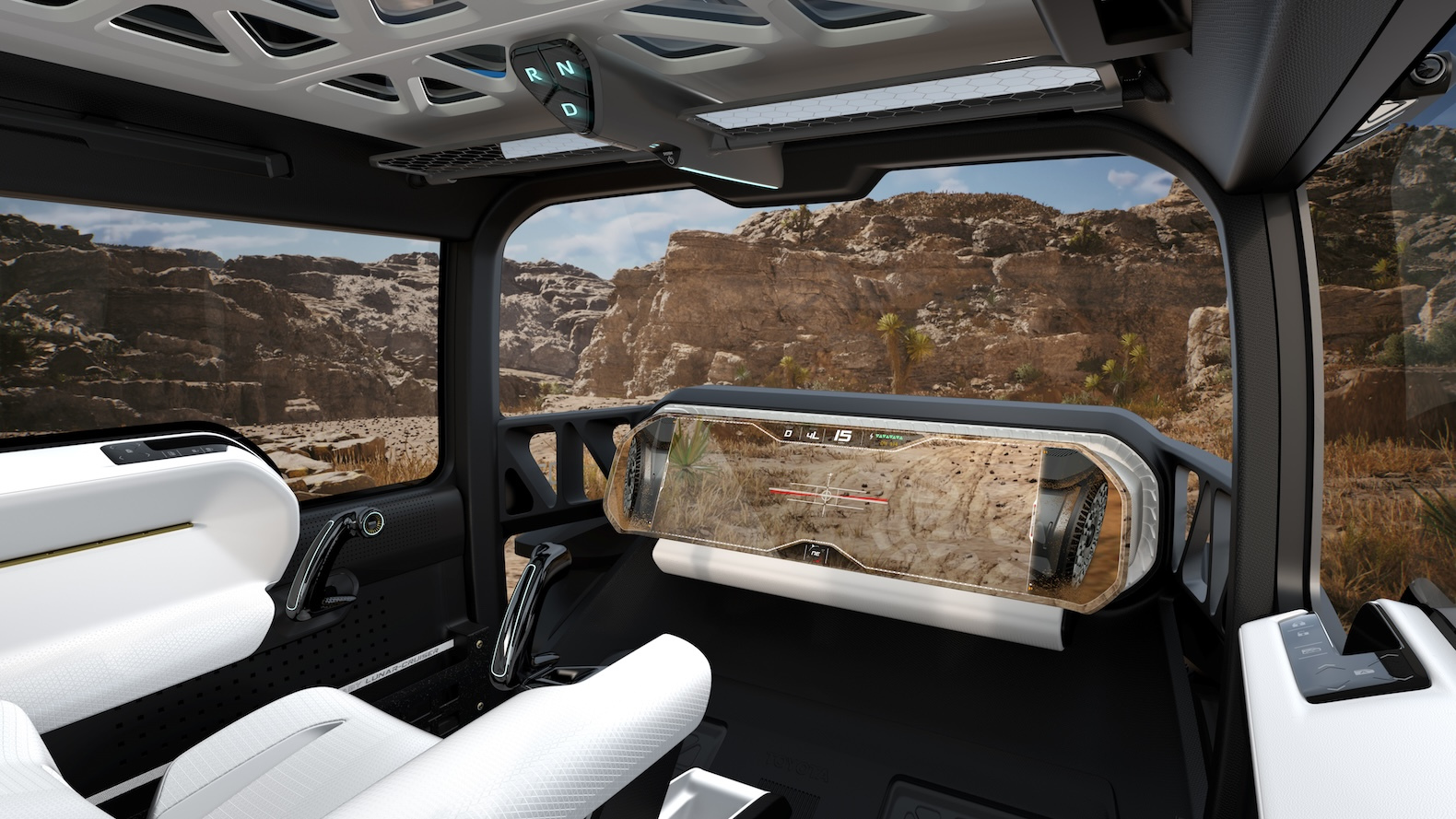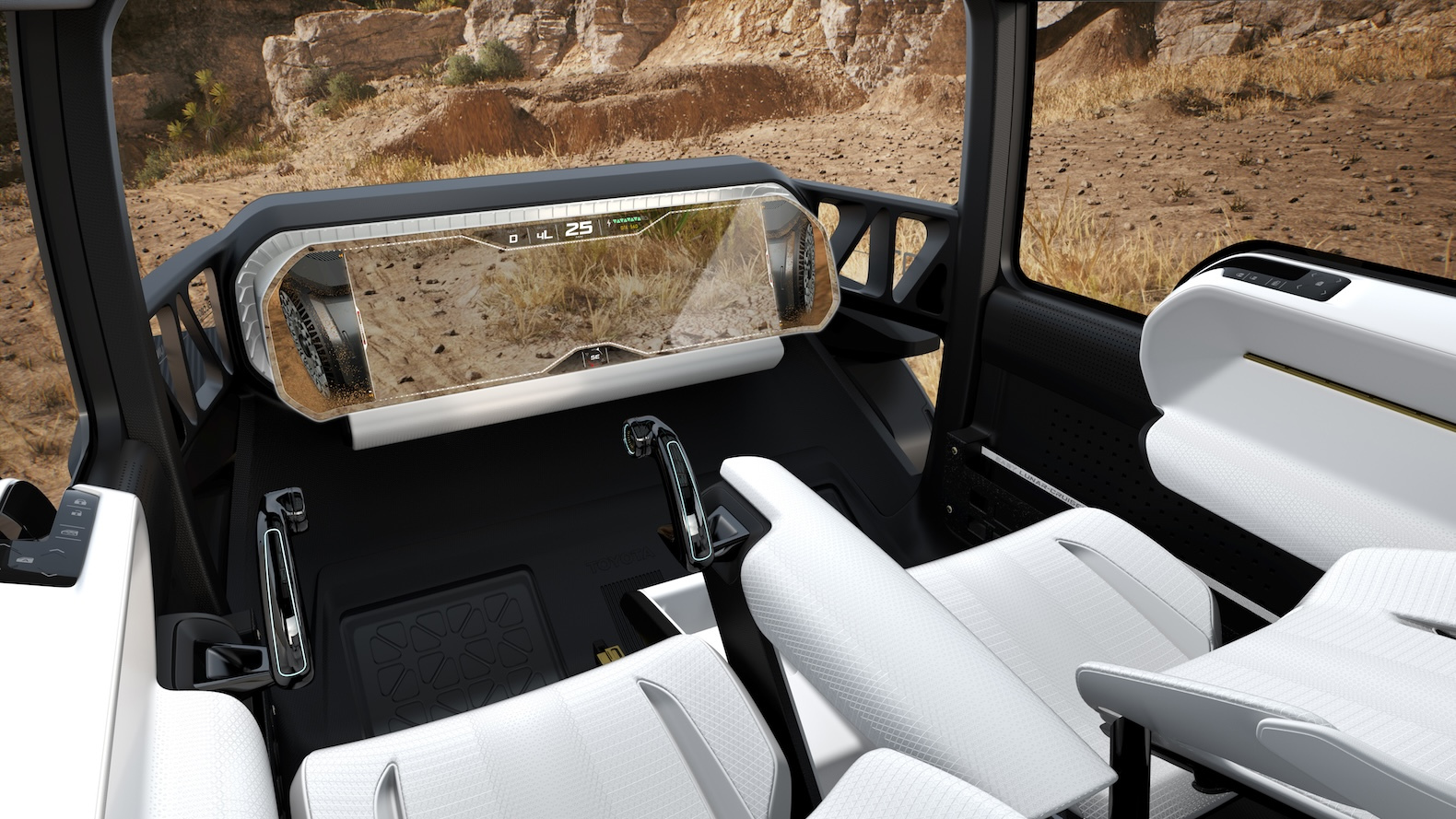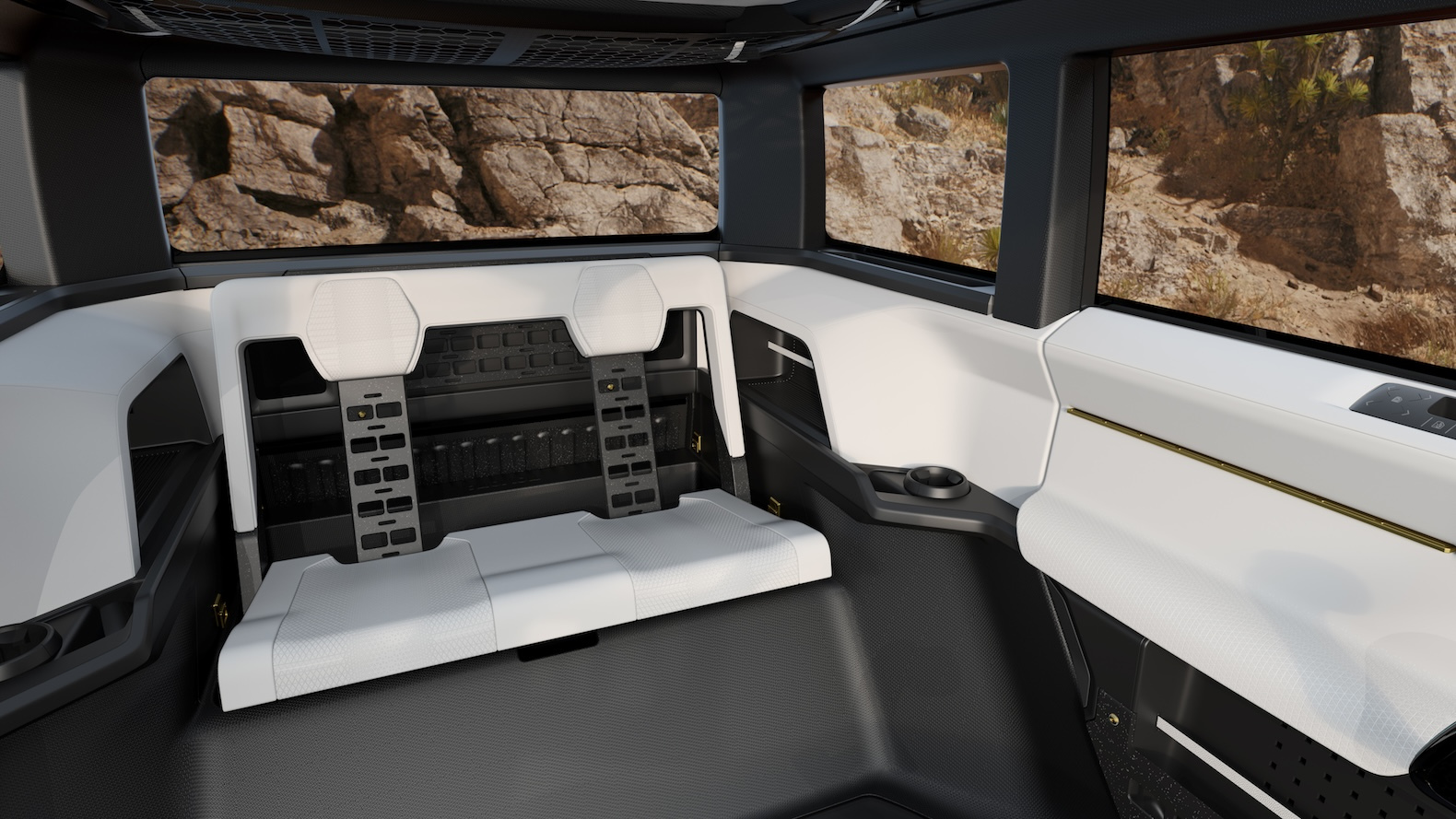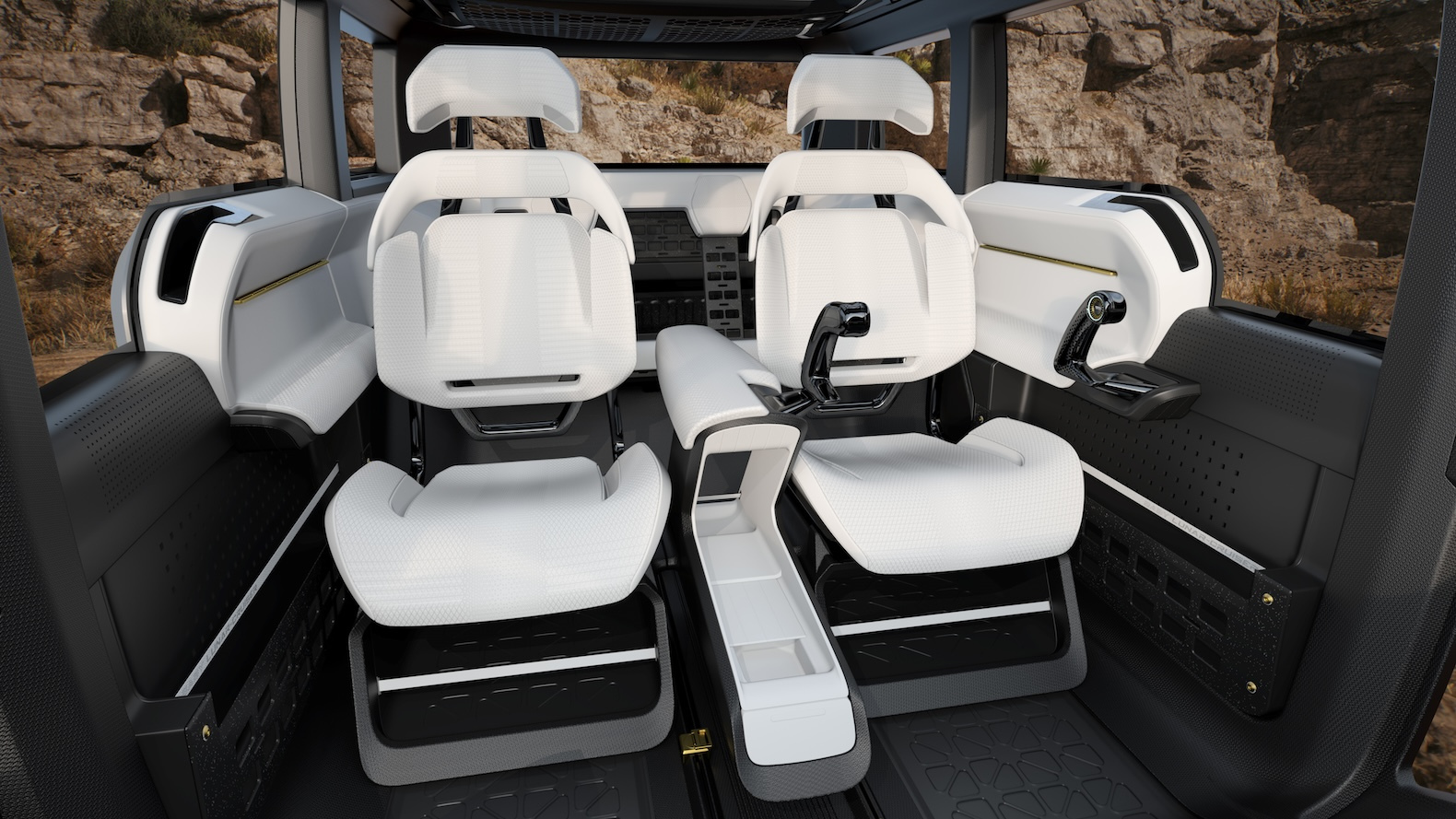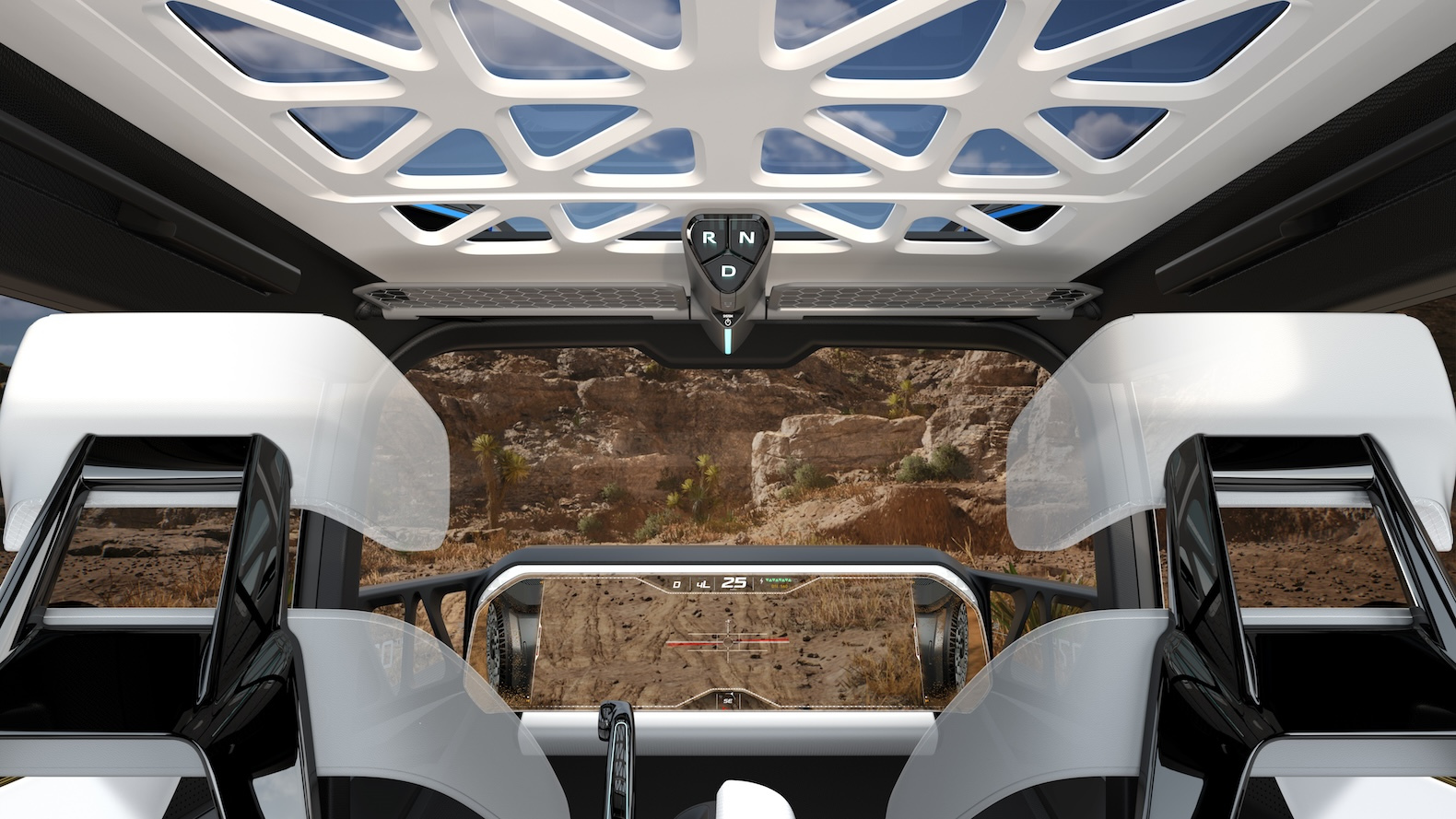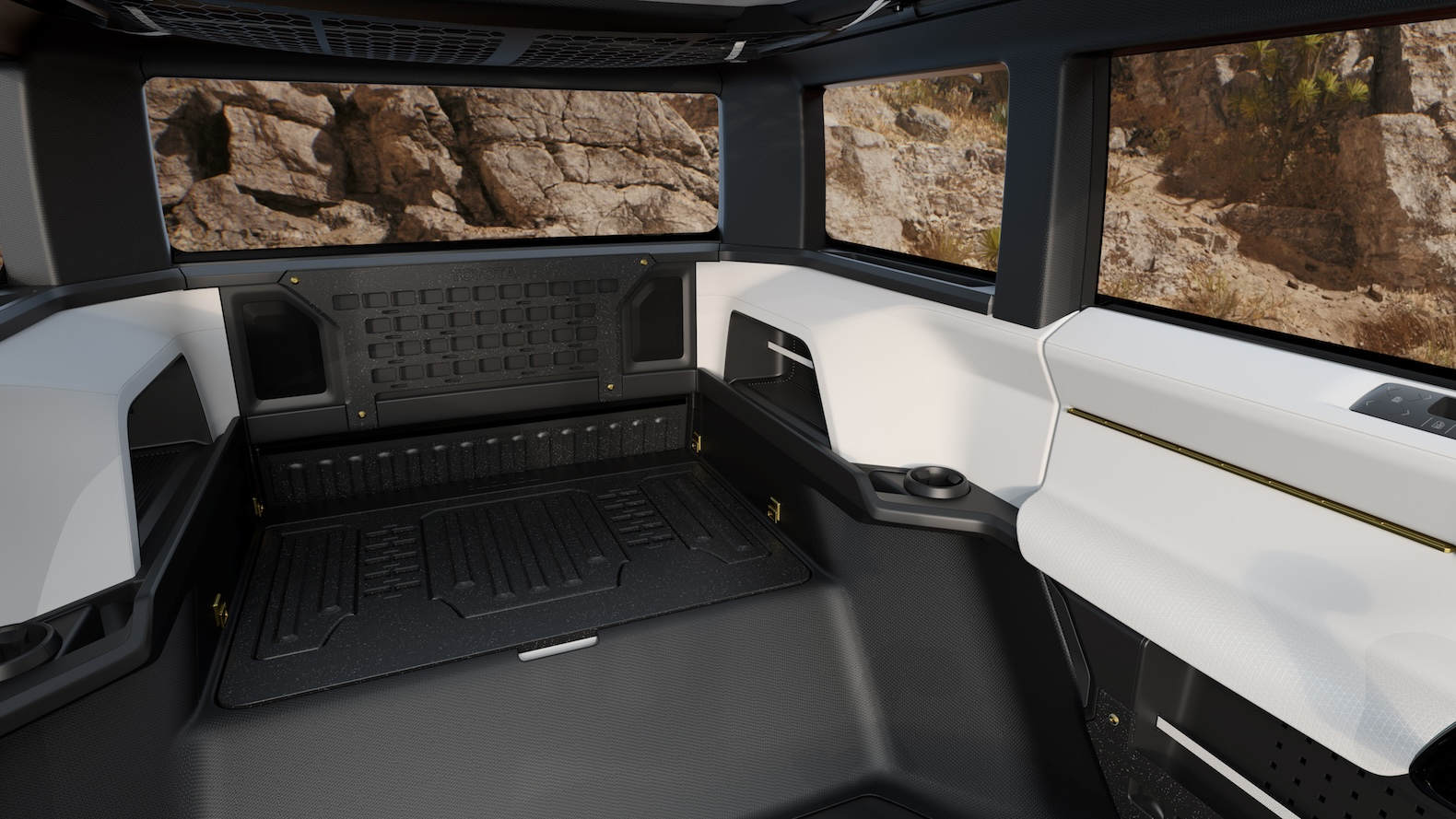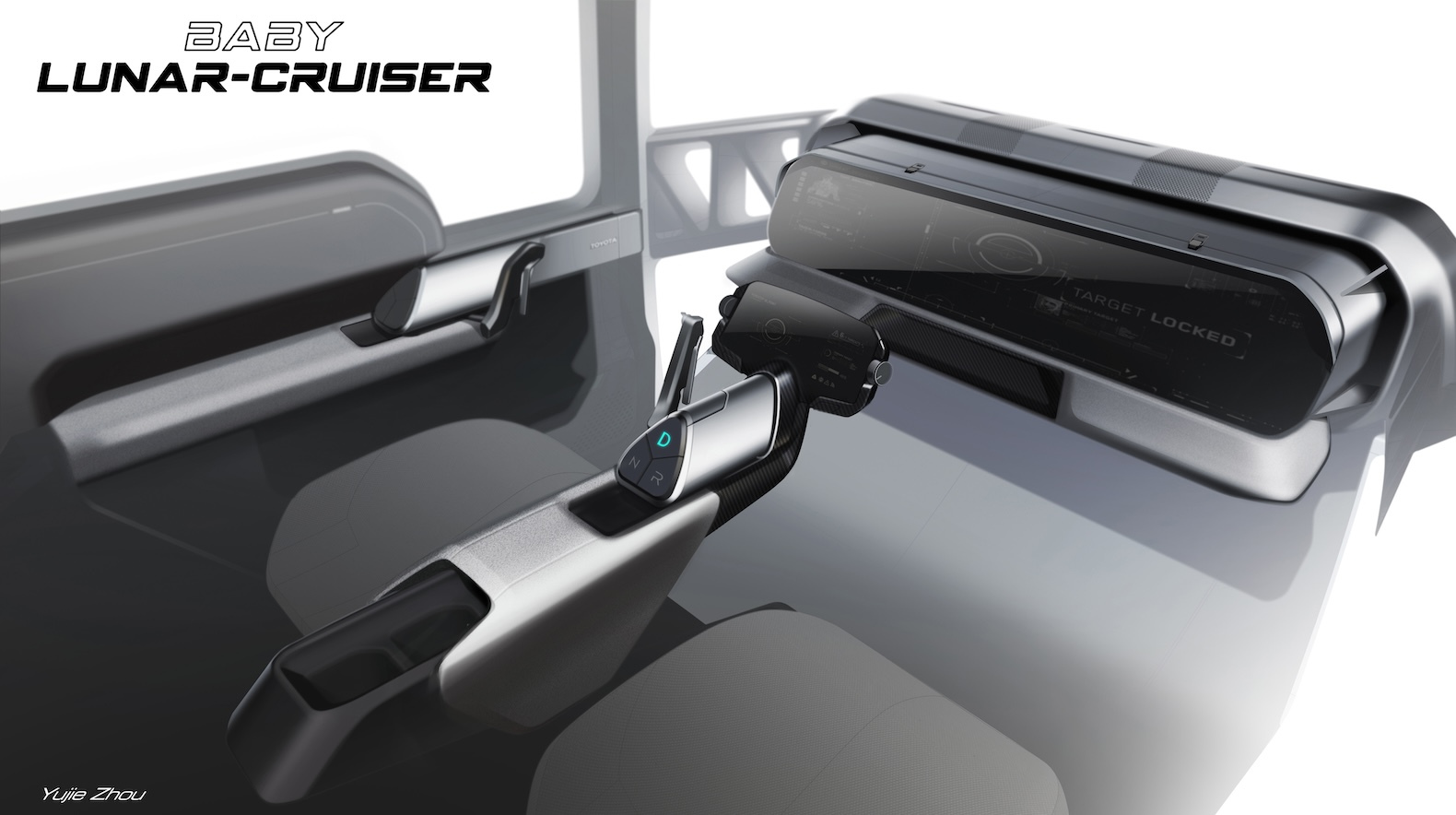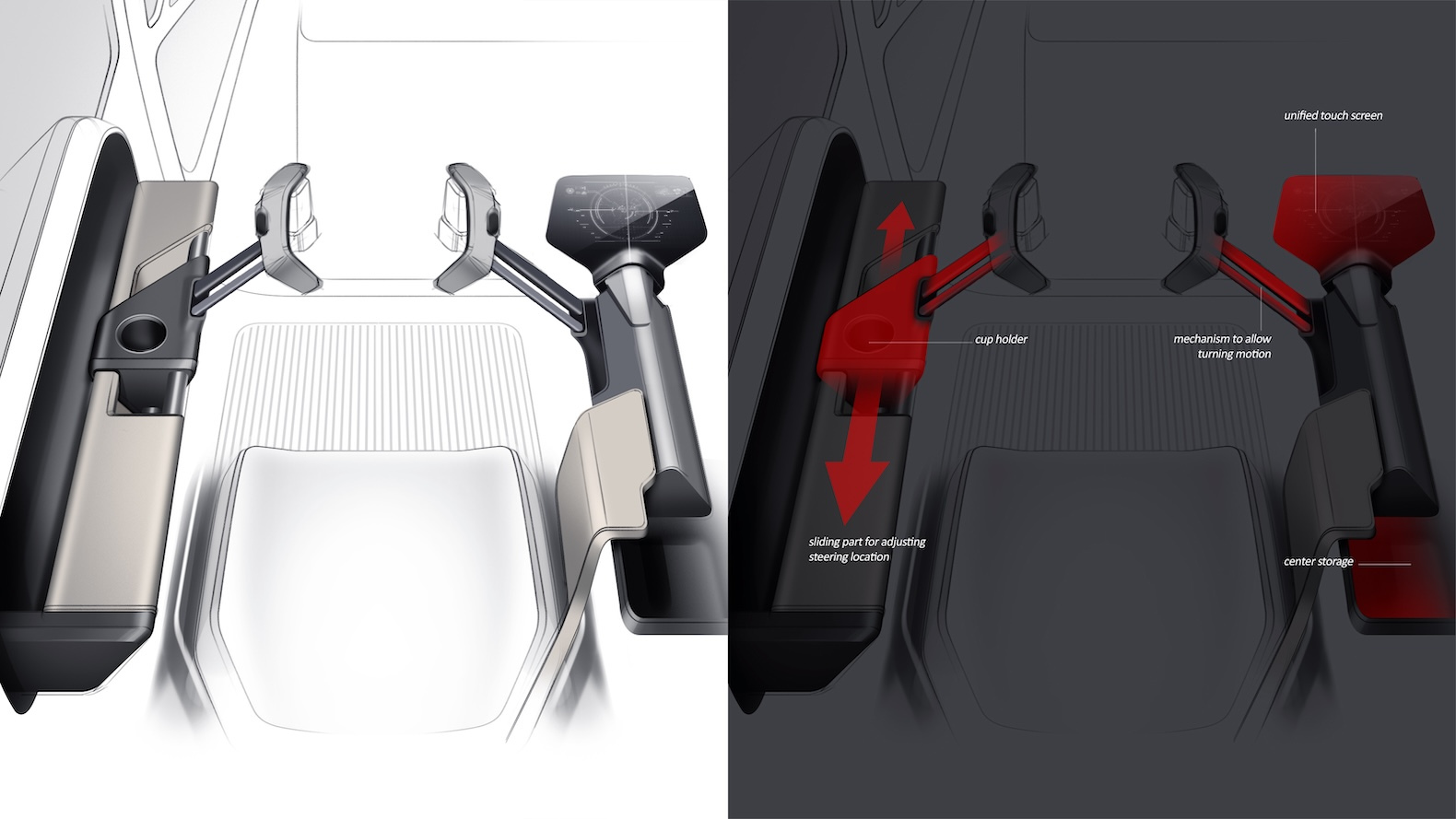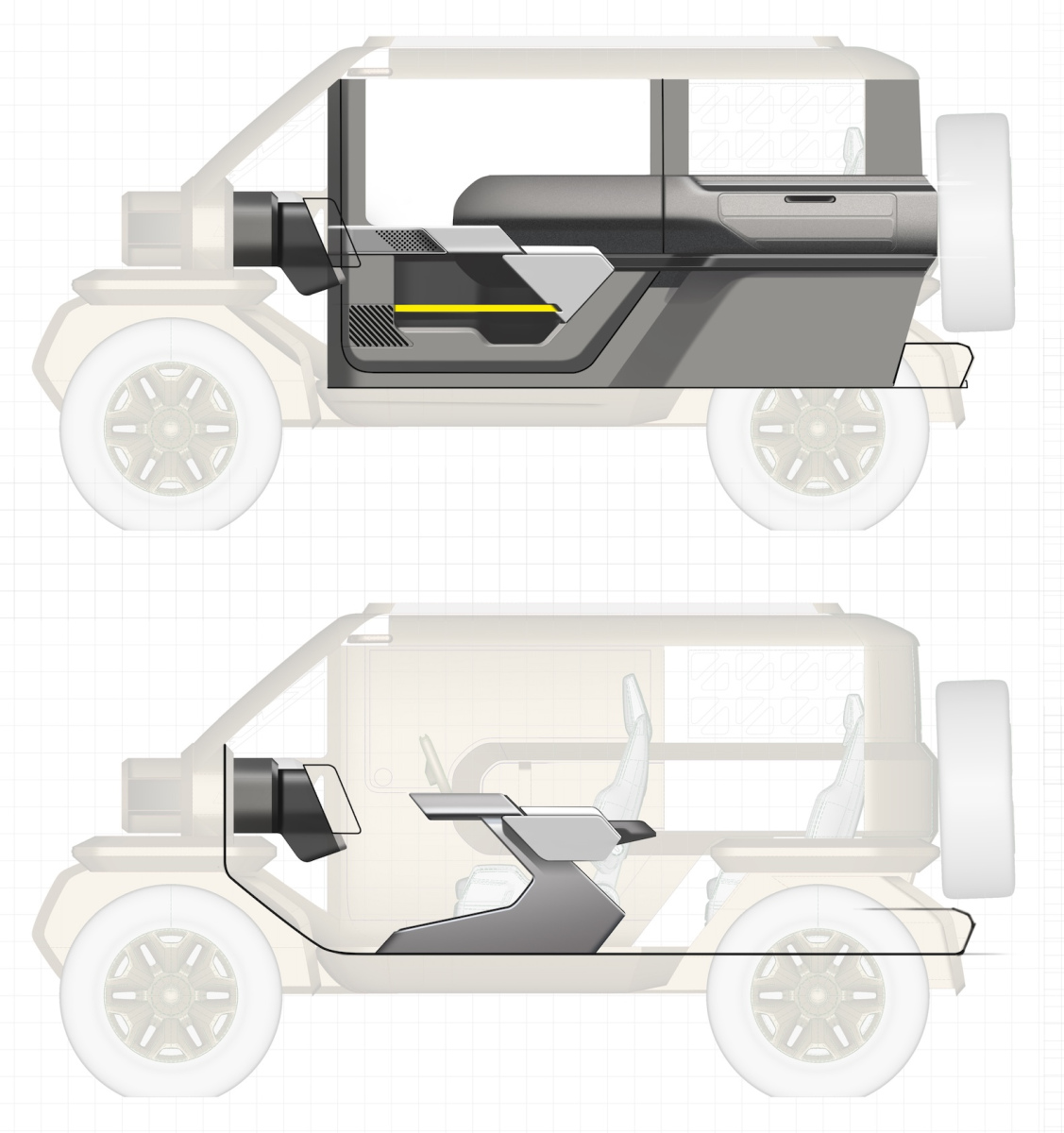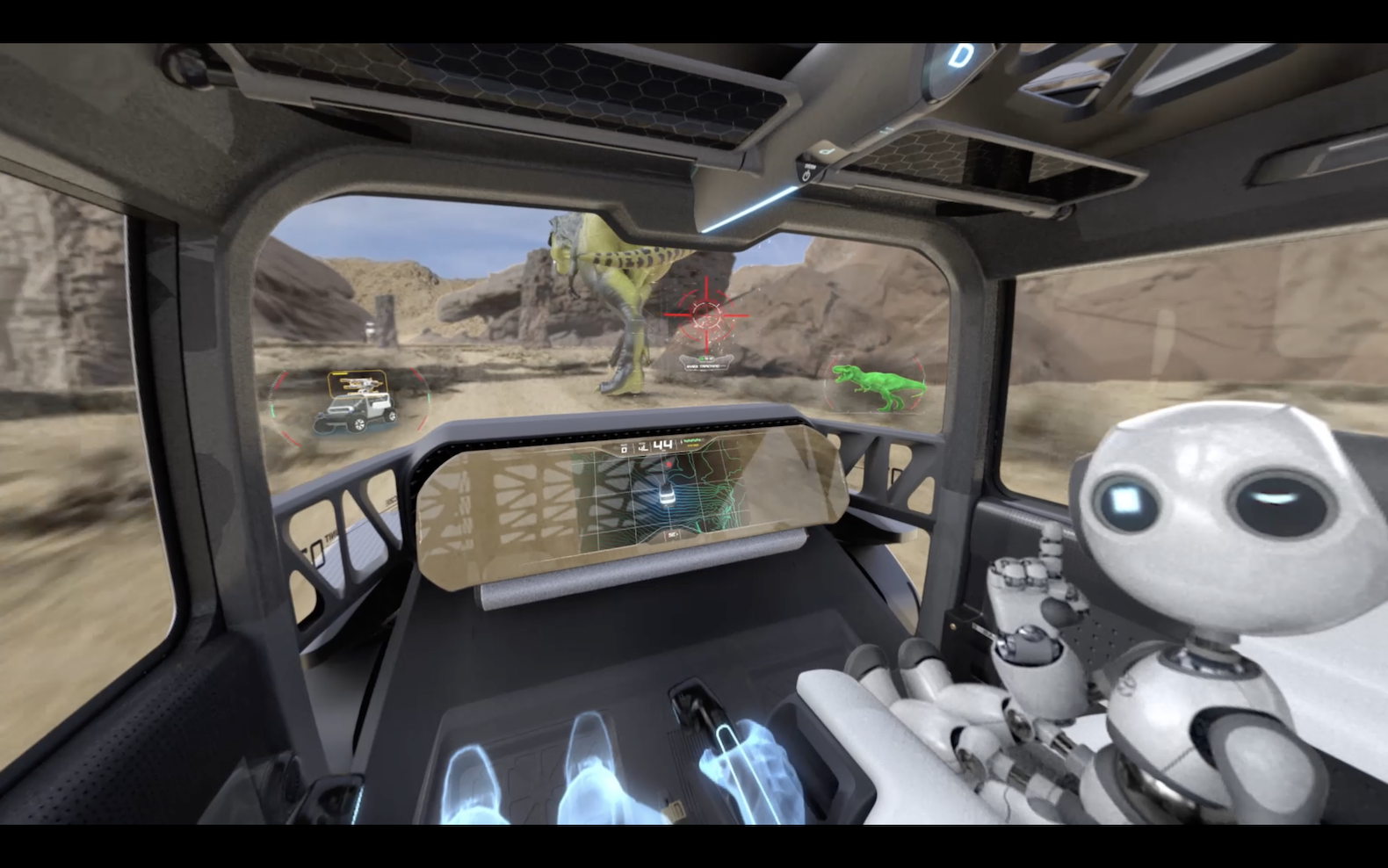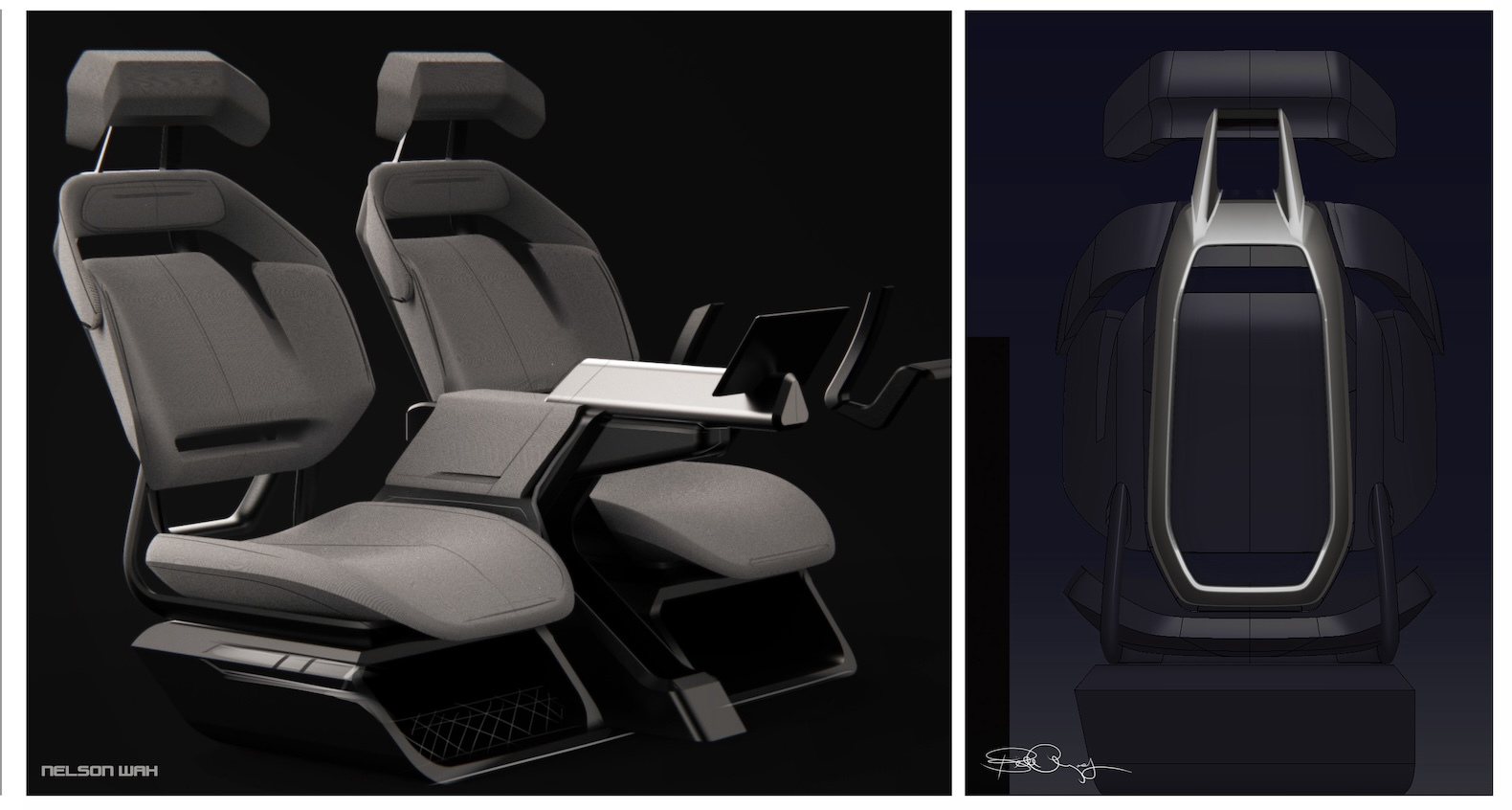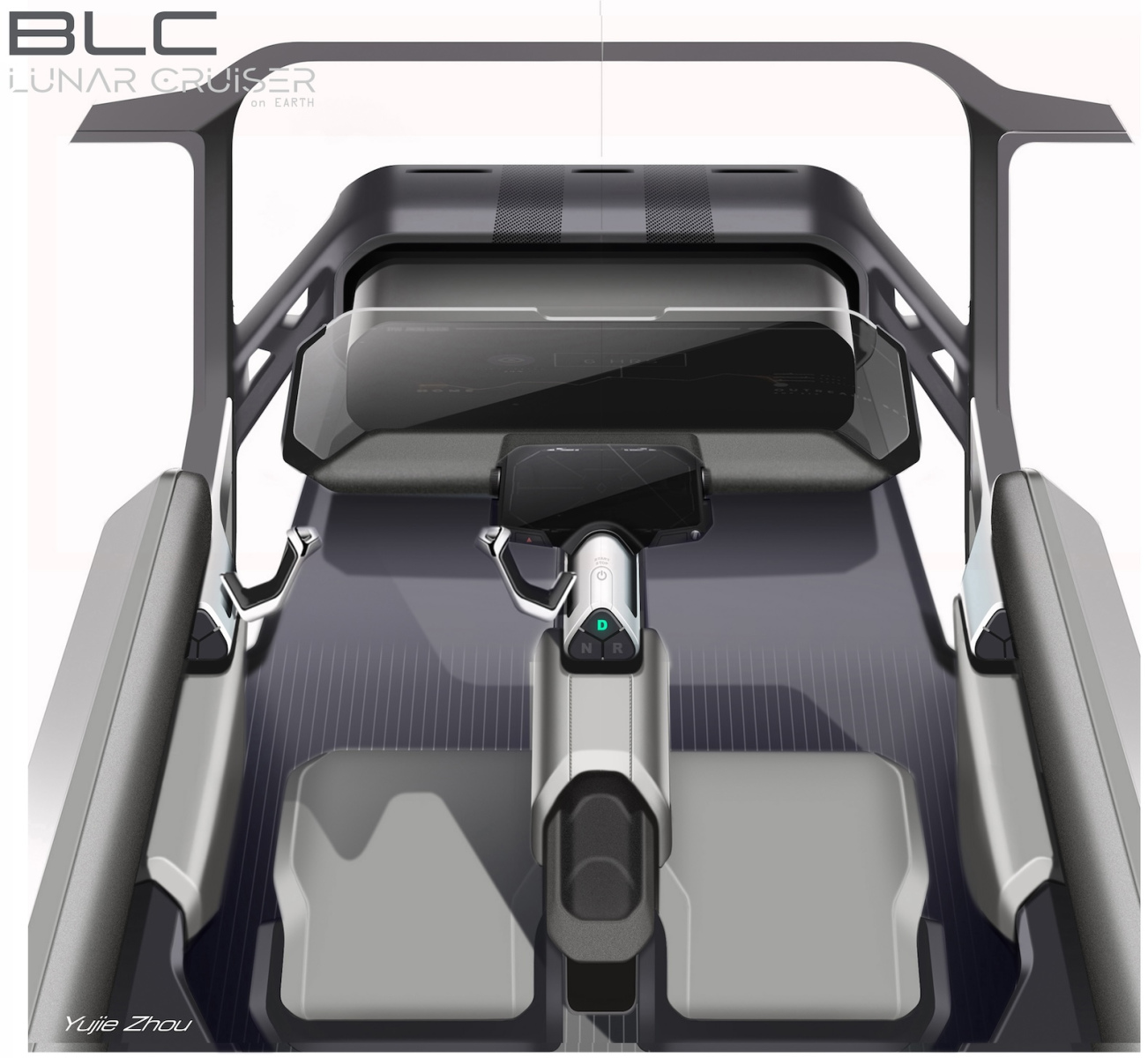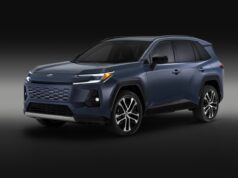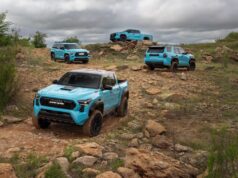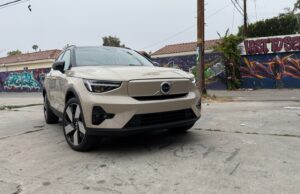Toyota unveiled the Baby Lunar Cruiser Thursday, a new concept created by Toyota and the Japanese Aerospace Exploration Agency. The interplanetary exploration vehicle takes its design cues not only from the requirements of space exploration, but also from the earthlier exploration priorities pioneered by the original Toyota FJ40. It uses an electric motor at each wheel, its airless tires steered by dual joysticks. Inside, there’s an augmented display instrument panel.
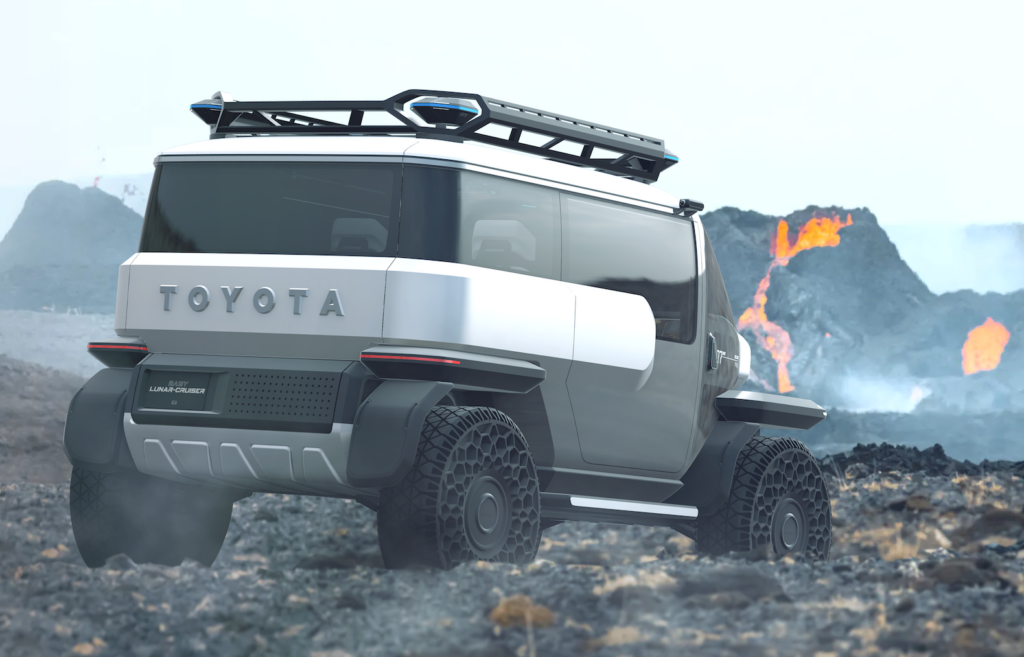
It follows the pattern set by the original lunar rover, designed by General Motors and Boeing, that used four drive motors, two steering motors and brakes.
That such a wild concept would spring rom Toyota’s CALTY Design Research Center in Newport Beach, California is little surprise.
Founded in 1973 by Soichiro and Eiji Toyoda in EL Segundo, Calif., the studio was established to provide fresh trendy thinking for use by Toyota’s global design staff in Japan.
“California was a youthful, vibrant epicenter of fresh ideas, a cool car culture, and the glamorous movie industry that inspired CALTY to create innovative designs and establish new trends,” says Kevin Hunter, president of CALTY.
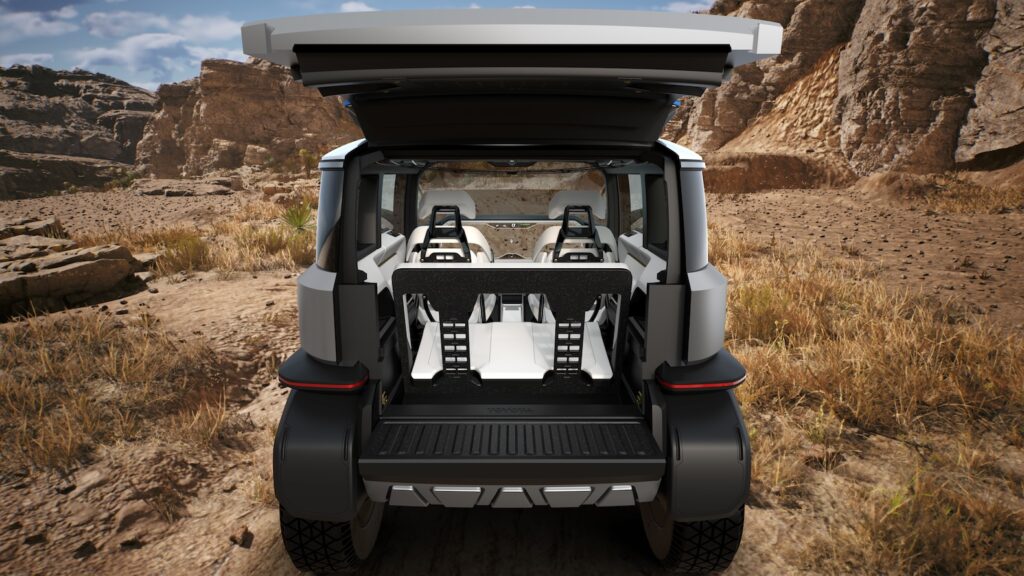
Of course, while automakers had never had design studios there, custom coachbuilders had a long history of building custom cars for Hollywood, among them Walter Murphy, Don Lee and George Barris. This is the legacy that Toyota tapped in California.
In 1978, when Toyota, then the world’s fifth-largest automaker, launched the second-generation Celica sport coupe, few realized what a momentous occasion it marked. For the car was the first Japanese car designed in America, created at Toyota’s CALTY Design Research Center which moved to Newport Beach in 1978.
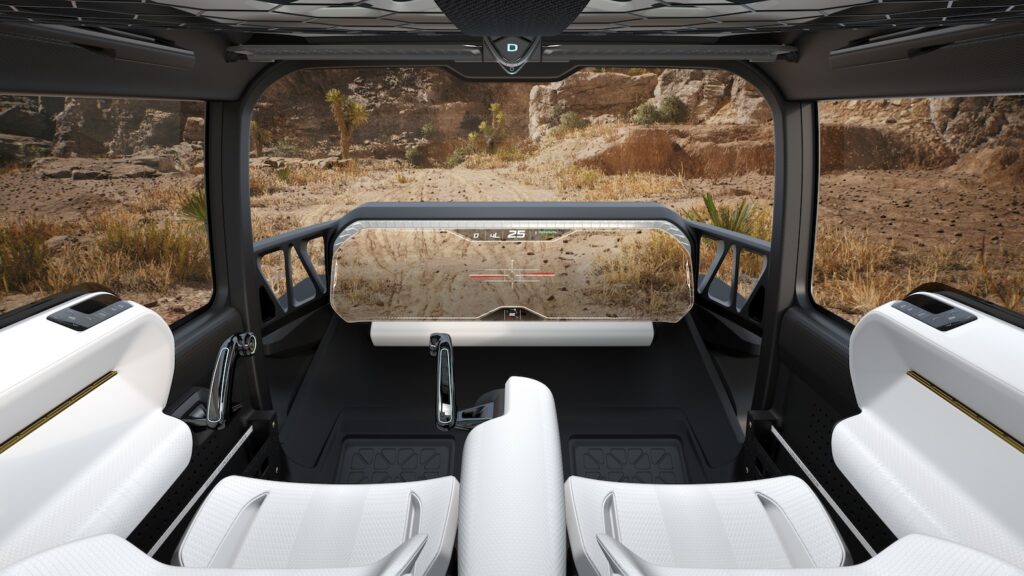
The inventiveness hasn’t stopped as the Baby Lunar Cruiser comes as CALTY celebrates its 50th anniversary.
Consider that CALTY designed a travel trailer in 1975, and you’ll see the studio had an expansive vision, one that includes the !983 MX-1 mid-engine sports car concept and its follow-up the MX-2, the 2012 Fun-Vii concept, the 2023 Lexus LF-LC concept, and the 2014 FT-1 concept, among others.
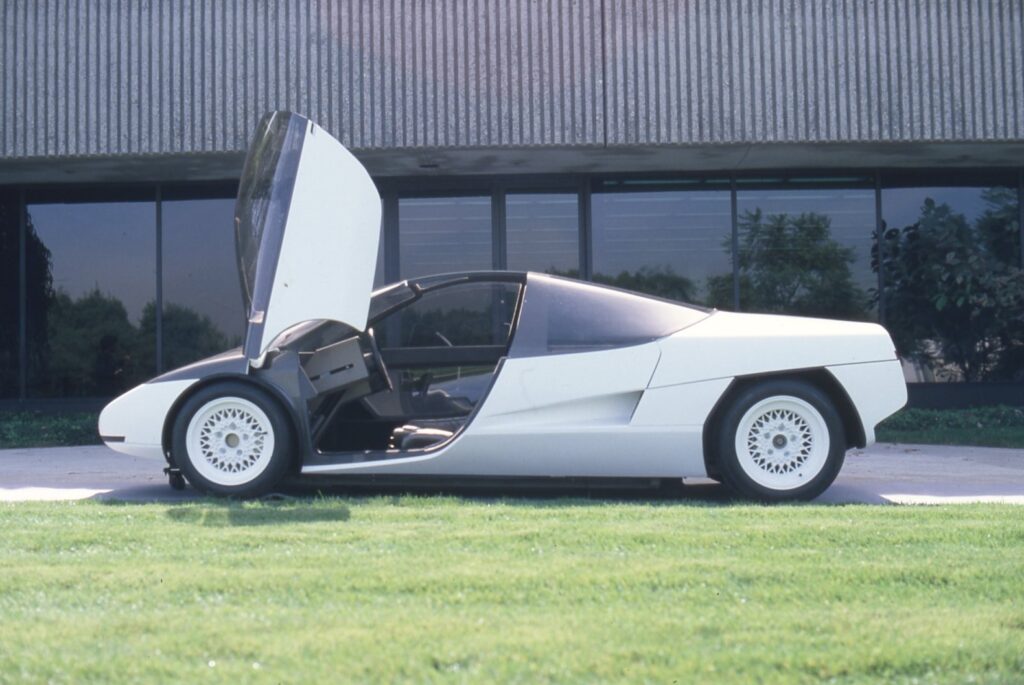
CALTY also designed a version of the 4th-generation Supra that was rejected. But the studio contributed to such production cars as the 2013 Toyota Avalon, 2014 Tundra and Highlander, 2015 Camry, 2016 Tacoma, 2018 CHR, Camry and Lexus LC500.
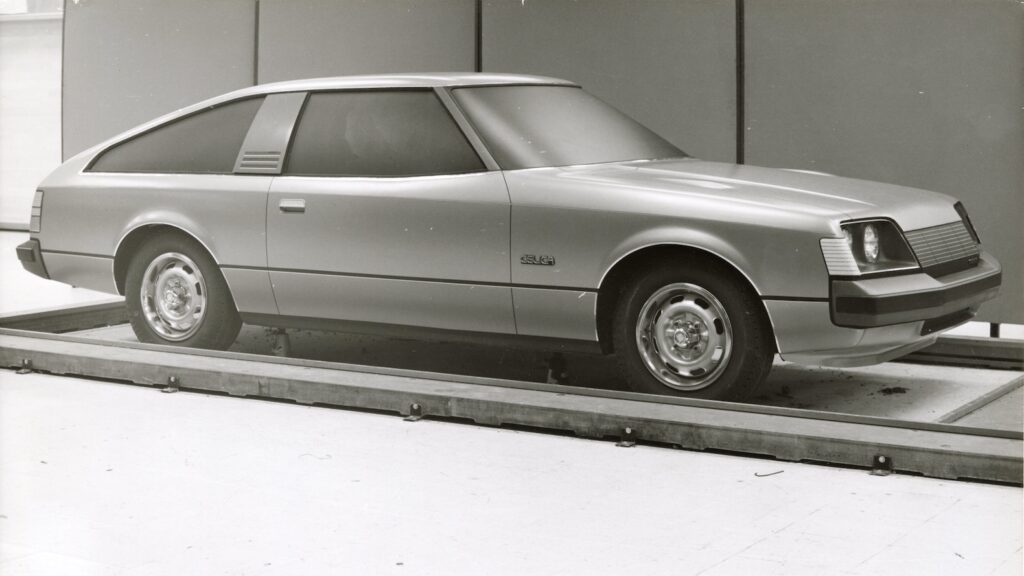
“As we continue our journey from the automotive era into the mobility era, there is one thing I feel I can say for sure,” says Simon Humphries, Toyota Motor Corporation Chief Branding Officer and Head of Design. “CALTY will be there at the forefront.”

